Lou’s Views
“Unofficial” Minutes & Comments
BOC’s Special Meeting 01/05/24
Board of Commissioners’ Agenda Packet » click here
Audio Recording » click here
1. Public Comment
There were comments made by sixteen (16) members of the public. The gist of the messages was to wait/delay/postpone moving forward with Rules of Procedure. Also, that too many budget meetings are scheduled. Lastly, that they should go to the Local Government Commission training before making any changes/decisions.
For more information » click here
¯\_(ツ)_/¯ What Evah!
2. Discussion and Possible Action on New Board of Commissioners’ Rules and Procedures – Commissioners Thomas and Paarfus
Agenda Packet – separate packet
Rules of Procedure » click here
Previously reported – December 2023
The Board of Commissioners is required to adopt rules of procedure. The current version the Board is using is included for your review (Attachment 1). The Board may adopt these rules as written or make amendments to them. I suggest the Board review the materials and adopt rules at the January meeting.
The Board is required to adopt some version of Rules of Procedure each year. The Rules of Procedure were substantially revised in 2020. The motion was made by Commissioner Thomas to hold a special meeting before the next regularly scheduled meeting in January. This will be on the agenda again next month so that they can adopt rules as required.
A decision was made – Approved (3-2)
Commissioners Smith and Dyer opposed the motion
Update –
Well, this agenda item was a really big kerfuffle. Mayor Holden alleges that this is a simple power grab by the newly elected Commissioners. He went on a rant about how they were trying to strip him of all his responsibilities as Mayor. Mayor Pro Tem Myers responded by saying that the town operates under the Council-Manager (weak Mayor) form of government, so nothing radical is being proposed (see below). Commissioner Paarfus explained the justifications for the proposed changes. An important point that they made was that the basis of the document is the School of Government template and that all of the proposed changes were in previous versions of this document that we used before.
A decision was made – Approved (3-1)
Commissioner Dyer opposed the motion
Editor’s note –
North Carolina has created a very limited role for mayors. Our state laws leave many decisions about the management and operation of municipalities to the governing board, or, in jurisdictions operating in a council-manager form of government, to managers.
The council-manager form of government is the system of local government that combines the strong political leadership of elected officials in the form of a council or other governing body, with the strong managerial experience of an appointed local government manager. The form establishes a representative system where all power is concentrated in the elected council and where the council hires a professionally trained manager to oversee the delivery of public services.
Based on Separation of Functions:
. • Governing Board is Legislative and Policy Oriented.
. • Administration is responsibility of professional manager.
Characteristics:
. • More Businesslike Form of Government
. • Pinpoints Authority and Responsibility
Mayor’s Role (N.C. General Statute 160A-151)
- Very Few Formal Powers.
- Preside at governing board meetings.
- Voting to break a tie.
- Sign documents on behalf of the city.
- Can call special meetings of council.
- Mayor and all council members are ineligible to serve as manager, interim manager, or acting manager.
Manager’s Role (N.C. General Statute 160A – 148)
- Appoint, suspend, remove all employees not elected or appointed by council.
- Direct and supervise the administration of all departments.
- Attend all council meetings and make recommendations to council.
- See that all state and city laws and council directions are carried out within the city.
- Prepare and submit annual recommended budget and CIP to council.
- Submit annual report on city finances and activities to council.
- Make any other reports that council requires on activities under manager’s control.
- Perform any other duties that council requires or authorizes.

Previously reported – January 2016
Alan is frustrated and was visibly upset. Apparently, he wanted to get a few things off his chest. He made it very clear his displeasure with his current role on the Board. He took umbrage to several things that have transpired over the last two (2) years. He admonished the Board for not including him in the process; it is a Board of six (6) not five (5) he said. He also feels that he is an asset and that he is being underutilized. As a bare minimum he felt that they should at least make sure he is kept informed. His comments appeared to be primarily directed at Commissioners Freer and Fletcher. He ended his lecture by making a heartfelt request to the new Board to be more open and make a more unified effort to run this town.
§30.02 FORM OF GOVERNMENT.
(A) The town shall operate under the Commissioner-Manager (weak Mayor) form of government. The legislative authority of the town shall be vested in the Mayor and Town Board of Commissioners, hereinafter referred to as the BOC, which shall consist of a Mayor and five Commissioners chosen as hereafter provided.
§30.04 MAYOR; DUTIES.
The Mayor shall serve as the chief spokesperson for the town and the chief advocate of formally approved and adopted town policy. In addition, the Mayor shall preside at meetings of the BOC; shall be recognized as head of the town government for all ceremonial purposes and by the governor for the purposes of disaster or emergency declarations. The Mayor shall sign ordinances and resolutions only on their passage; shall sign deeds, bonds, contracts and other instruments approved by BOC as required by law. Willful failure by a mayor to discharge their legal duties shall result in those duties being assumed by the Mayor Pro Tem by reason of disqualification, as set forth in § 30.05. Legal remedies for failure to discharge the duties of Mayor may result in legal censure or charges of contempt and may serve as grounds for impeachment. The Mayor shall convene the Town BOC in special called session when deemed necessary by the Mayor. Unless otherwise expressly provided by law or this chapter, the Mayor shall have no vote on any question before the Town BOC except in case of a tie.

Sorry but that is not our form of government. Maybe he should have read the job description before he ran for Mayor. If he wanted more input, he should have run for a Commissioner position on the Board. The Mayor’s role is to maintain neutrality on issues to be decided by the Board, manage the meetings in an efficient manner, and maintain respectful decorum on the part of all speakers. That’s it! The Mayor has no authority except what is given to him by the Board of Commissioners. This meeting was neither the time nor the place to air his grievances. Once again, this is a private matter that should have been handled in a different venue then this. The opportunity to do so was when the Board met in Executive Session.
3. Discussion and Possible Action on Election of Executive Secretary – Commissioners Thomas and Paarfus
Agenda Packet – background information was not provided
Commissioner Paarfus nominated Commissioner Thomas for the Executive Secretary position that they just created. The intent is to deliver the benefits that they had when it was in place before.
A decision was made – Approved (3-1)
Commissioner Dyer opposed the motion
4. Discussion and Possible Action on Agenda Topic Cover Sheet – Commissioners Thomas and Paarfus
Agenda Packet – page 1
Mayor Pro Tem Myers explained that the intent is to help the public understand what’s going to be discussed by providing them with a one page executive summary. Commissioner Thomas pointed out that this type of document is used by most of the surrounding municipalities. Mayor Pro Tem Myers stated that he feels that it will also facilitate the Board to be able to take action when agenda items gets in front of them.
A decision was made – Approved (3-1)
Commissioner Dyer opposed the motion
5. Discussion and Possible Action on Additional Board of Commissioners’ Meetings – Commissioners Thomas and Paarfus
Agenda Packet – pages 2 – 3
Proposed Meeting Calendar
January – Orientation, Training, Budget Kick-Off
- January 5 – 6:30 PM SM/ Rules of Procedure & Meeting Calendar
- January 9-10 New Commissioner Staff Orientation Sessions
- January 18-19 New Commissioner Training Sessions (Wilmington)
- January 23 – 5:00 PM BOC’s Meeting
- January 30 – 10:00 AM Budget Meeting/Kick-off & Planning
February – Review Current Budgets & Status
- February 2 -10:00 AM Budget Meeting/Water Sewer
- February 6-10:00 AM Budget Meeting/Parks and Recreation
- February 8-10:00 AM Budget Meeting/Admin/Finance and Inspections
- February 13 – 10:00 AM Budget Meeting/Police and Public Works
- February 20 – 5:00 PM Regular BOC’s Meeting
- February 27 -10:00 AM Budget Meeting/CIP and Projects
- February 29 – 10:00 AM Budget Meeting/ Goal Setting & Priorities
- Feb. Special Meeting TBD/Pier Plan
March- Department Input & Budget Requests
- March 5 – 10:00 AM Budget Meeting/Water Sewer
- March 7-10:00 AM Budget Meeting/Parks and Recreation
- March 12 -10:00 AM BM/Admin., Finance, Police, and Inspections
- March 14-10:00 AM Budget Meeting/Public Works
- March 18 -10:00 AM Budget Meeting/CIP and Projects
- March 19 – 5:00 PM Regular BOC Meeting
- March 20- 2:00 PM Special Meeting/Pier Plan
April – Budget Preparation
- April 2 -10:00 AM Budget Meeting/Canal Fund
- April 4-10:00 AM Budget Meeting/Canal Fund
- April 9-10:00 AM Budget Meeting/Canal Fund
- April 11-10:00 AM Budget Meeting/General Fund Revenue & Tax Rate
- April 16 – 10:00 AM Budget Meeting/BPART Fund Revenue
- April 16 – 5:00 PM Regular BOC’s Meeting
- April 18-TBD (Morning) Listening Session
- April 30-10:00 AM Budget Meeting/Expense Summary
May – Resolve Budget to Arrive at Budget Message
- May 2 – 10:00 AM Budget Meeting/Budget Revisions
- May 7 – 10:00 AM Budget Meeting/Budget Revisions
- May 9 – 10:00 AM Budget Meeting/Draft Budget
- May 14 – 10:00 AM Budget Meeting/Draft Budget
- May 16-10:00 AM BM/Public Presentation & Input on Draft Budget
- May 21- 5:00 PM Regular BOC’s Meeting
- May 23 – 10:00 AM Budget Meeting/Draft Budget Message
- May 28 – 10:00 AM Budget Meeting/Draft Budget Message
- May 31 (NLT June 1) Budget Message Released
June – Public Input and Budget Tweaks
- June 3 -10:00 AM Budget Meeting/Revisions
- June 7 -10:00 AM Budget Meeting/Revisions
- June 11 – 10:00 AM Budget Meeting /Revisions
- June 13 -10:00 AM Budget Meeting/Revisions
- June 18 – 4:45 PM Budget Public Hearing as part of BOC Mtg
- June 18 – 5:00 PM Regular BOC’s Meeting
- June 20 – 10:00 AM Budget Meeting/Final Changes
- June 25 -10:00 AM Budget Meeting/Final Changes
- June 27 – 10:00 AM Budget Meeting/Final Changes
- June 30 – Must adopt Budget NLT
Department Budget meeting expectations:
Provide a detailed presentation of budget line items including
- Last year spent
- This year YTD spent and FY Outlook
- Next year’s Budget proposal with priorities identified
Update –
Quite the brouhaha. Commissioner Smith objected to the number of scheduled meetings. Rick felt that they should be able to consolidate them. Mayor Pro Tem Myers explained that he wants to get ahead of the process. They pointed out that it is a lot easier to cancel a meeting that they don’t need than to add a meeting. The goal is to put them on the calendar, they are trying to be proactive. Mayor Holden and Commissioner Dyer stated that they will miss a lot of these meetings. Commissioner Paarfus withdrew the motion to approve the schedule as submitted. He then made the motion to schedule a Special Meeting before the next scheduled Regular Meeting to develop a schedule of budget meetings that is more palatable to all the Board members.
A decision was made – Approved unanimously
Editor’s note –
When I submitted My Xmas List I asked that the BOC’s start the budget process earlier and establish a monthly budget meeting schedule. This far and away exceeds my expectations. Frankly, I thought it was a little over the top. Meetings once or twice a month should be more than adequate for them to accomplish what they want.

6. Discussion and Possible Action on Block Q Contract – Commissioners Thomas and Paarfus
Agenda Packet – pages 4 – 38
Email from Commissioner Paarfus
The purpose of this e-mail is to strongly recommend that the Town not execute the Block Q paving contract or to cancel this contract immediately if it has been executed.
Please see the attached summary of my conversation with NCDEQ and Section .1000 of the NC Administrative Code titled STORMWATER MANAGEMENT. Contrary to previous assertions, it appears that there are in fact options for permeable pavements that could be used to avoid dedicating valuable real estate to storm water filtration features. I recognize that this permeable pavement will cost more than impervious asphalt and will have to be engineered, however some of the additional cost will be offset by not doing the storm water feature site work and not relocating utilities. I also believe that eliminating the current stormwater features also removes a potential water hazard for small children.
Referring to sheet CO of the attached bid drawings the total site area is 77,674 square feet (hard to read due to poor resolution). I assume this is the same area as defined by the limits of disturbance on sheet C2 of the bid drawings. Based on some rough calculations, I think 10-11% of the site is dedicated to storm water management as a consequence of using impervious paving. This also looks to be the equivalent of forty vehicle parking spaces. Car parking is important because one of the reasons Block Q was purchased was to meet parking requirements of the Corps Storm Damage Reduction study the Town is currently paying for. Should more parking be needed at this site, a higher percentage of the site area will need to be allocated to storm water management if impervious pavement is used again.
In summary, I believe permeable pavement provides a superior solution for efficient land use of this high value property compared to the current impervious pavement called for in the bid documents. I recommend that the Block Q paving contract not be executed or canceled if it has been executed.
Summary of my Conversation with Dan Sams of NC Environmental Quality
I spoke with Mr. Sams concerning the Block Q paving contract. I explained that we were paving with asphalt and using stormwater filtration features to handle the storm water runoff from these surfaces. I expressed my concern about using so much of this valuable real estate for stormwater management and asked him if permeable pavement such as porous asphalt or porous concrete could be an option for this project. Mr. Sams stated that it could be used provided that it was a properly engineered solution designed by a Professional Engineer. I also asked if compacted gravel as addressed in I SA NCAC 02H .1002 (26) was considered impervious because it was proof rolled. He said that compacted gravel was considered impervious when crush and run gravel is used as it gets very dense. He did say that there is a design for using gravel in their stormwater design manual, but this too would have to be designed by a Professional Engineer. I also noted that it was my understanding that porous asphalt/concrete could cost 2-3 times what regular asphalt costs.
Stormwater Design Manual » click here
Update –
The motion was made to instruct the Town Manager to not enter into any agreement related to the Block Q project. Commissioner Paarfus researched what we could do instead of what was previously agreed to. They feel that there is enough justification to put the current plans on pause and reevaluate the plans for this property.
A decision was made – Approved (3-1)
Commissioner Dyer opposed the motion
General Comments –
Commissioner Rick Smith – was not in attendance, he participated remotely but could not vote tonight because he was not physically present
New Holden Beach commissioners change rules, procedures; add position
The Holden Beach Board of Commissioners during a Friday, Jan. 5, special meeting adopted new rules and procedures, elected an executive secretary and decided to re-work the proposed additional 35-plus budget meetings. During the meeting, tensions between both the board and attendees were high as questions swirled around the amount of time given to the public to review all the proposed changes and the purposes of those changes.
Some of the changes made were:
- Creating an executive secretary position;
- Closed session procedures concerning purchasing, leasing and exchanging real property: Disclosing the property owner, location and the town’s intent for the property;
- Making all meeting documentation available online;
- Adding an “agenda topic cover sheet,” and more.
There were also numerous wording changes throughout the rules and procedures document, too. Commissioner Rick Smith was not physically at the meeting but joined in via phone call. He could participate in discussions but could not vote because he was not physically present. Since the agenda packet for the special meeting was not published until Wednesday, citizens had only 48 hours before the meeting to review the 40-page document, including the amended rules and procedures. The 24-page amended rules and procedures did not include the 19-page original document for the public to compare the differences. Numerous residents spoke during the public comment portion of the meeting, asking the board to hold off voting on the changes until the new commissioners complete their new commissioner training sessions later in the month. Twelve submitted written public comments requested the board to postpone action, too. Commissioner Page Dyer agreed with the public commenters and urged the board to hold off on the decisions until the new commissioners complete their training, which would also give the public more time to review the changes. Dyer was the only commissioner who voted in opposition to amending the rules and procedures and said she was uncomfortable adopting the changes and questioned if the changes were legal. “… It was approximately 48 hours,” she said. “And for the public to have to be able to go through that much documentation without indication of what was changed, for the average layperson that’s not gone through any municipality training, that’s going to be difficult for them to digest.” Town Attorney Rick Green did not attend the special meeting nor join through a phone call, so commissioners were unable to ask for immediate legal guidance to aid in their decisions. Smith agreed with Dyer, and both suggested waiting to make the amendments until Green is in attendance to address questions and give legal advice. Commissioner Rick Paarfus said all changes were discussed with the Town Manager David Hewett and Town Clerk Heather Finnell before proposing them to the board, noting that many of the amendments were taken from past town rules and procedures. “We are required to get a set of rules and procedures in place,” he noted. “It should’ve been done at the last meeting.” Paarfus also said he believes the newly approved document will make the town more transparent and bring clarity to residents in understanding town projects and plans. Mayor Pro-Tem Tom Myers said the amendments were based on the UNC School of Government template and were heavily scrutinized before being proposed. He said the changes were needed to make Holden Beach stronger in their government as a whole. “Like it or not, we have a weak mayor form of government,” he added. Myers and Paarfus said all the changes were supposed to be made at the December meeting. The new rules will improve the government of the town and will bring back “good practices,” Myers noted. After approving the new rules and procedures, Paarfus motioned for Commissioner Tracey Thomas to serve in the newly added executive secretary position. The motion passed three to one, with Dyer being the only opposing vote. Thomas said the position will add more “control” to agendas and said the commissioners in favor of the changes believe they are the best way to move forward with meetings.
The executive secretary’s role, as stated on pages 11 and 12 of the approved rules and procedures, is to:
- Create the agenda;
- Assemble the meeting packet;
- And authorize the delivery and publication of the agenda.
Paarfus said Town Clerk Heather Finnell does a great job and that the executive secretary will ensure that agenda items are thorough and filled with sufficient information, noting that the new role does not have the authority to prevent items from getting on the agenda. “[The executive secretary’s] primary function is to make sure that all the information is there and it’s clear so the public can review it,” he said. “That’s it. And it hasn’t been happening, so that’s what we want to do.” Myers said the secretary will serve on the board and that the board could take future action if the position did not work out or if changes are wanted. Thomas said that the position is a collaborative role that will include working with the Town Clerk and making sure all agenda items are completed with the needed materials. Although Thomas stated the position was for collaboration, Dyer, Smith and Mayor Alan Holden said they thought the position was a slap in the face to Finnell’s role and previous and current work with the town, noting she has been awarded as the “top clerk” in North Carolina in the past. “You haven’t had the first training course and you’re deciding that this lady, the number one clerk in the State of North Carolina, doesn’t know what they’re doing,” Holden said, directed towards Thomas, Paarfus and Myers. Dyer said she hasn’t experienced any issues with the agenda before and that the hired staff is able, and has been able, to complete tasks for the board. She and Smith both said the added position is not necessary. Dyer also noted that the town’s charter states the town manager is the person who directs staff, and wondered if having a commissioner direct staff would be a violation of the charter. In an earlier discussion in the meeting, Holden also said he sees these actions as changing the town’s charter and questioned if it is a violation. “I’m not directing Heather, I’m just working with Heather,” Thomas replied to Dyers comment. “Like I said, it’s a collaborative effort.” Throughout the meeting, Paarfus and Myers said the changes could be revised, amended or fixed in the future if they are not correct or legal. The three commissioners seeking the changes just want to get a foundation in place, they maintained. The board also adopted an “agenda topic cover sheet” to be added to agenda items. The sheet breaks down an issue or action, its potential fiscal impact, associated contracts and agreements and notes different staff recommendations. Smith stated multiple times that he sees these actions as the three newly elected commissioners working together as “a team” to change how the town runs. Holden, during the rules and procedures discussion, called the three commissioners’ steps “a grab of power.” “Why can’t we listen to the people, why can’t we take advantage of the number one clerk in the state of North Carolina,” Holden said. “Why do we throw all of this aside for a power grab? And that is exactly what it is.” One action on the agenda included adding over 35 additional meetings between January and June. The meetings were labeled as budget meetings and were proposed to be held every Tuesday and Thursday at 10:00 a.m. There were occasional special meetings scheduled, too. Several public comment speakers, as well as Dyer, Smith and Holden, said the meetings were at an unrealistic time for residents, and commissioners, with jobs. “Unless I shut down my business, I cannot attend a meeting every other day at 10:00 a.m.,” Dyer said. Dyer also questioned why the two or so additional budget meetings the board has had in the past weren’t enough. Paarfus, Myers and Thomas said that the meetings were set during work hours, so staff did not have to work late and that a lot of the meetings were expected to be brief. They said they felt they needed more time with each department to learn the budget and department needs because they are new to the board. “No votes are going to be taken…,” Myers said. The board agreed to hold off on taking action on a Board of Commissioners budget meeting schedule and work together to create a schedule to ensure all commissioners and the mayor can attend; this was the only unanimous vote. The schedule is supposed to be discussed at the next regular meeting on Jan. 23. “It’s going to be a rough ride,” Mayor Holden said. Town staff stayed quiet throughout the meeting and did not weigh in on discussions, nor did the board request to hear their input. This story only covers some of the information or details discussed and shared at the meeting. The meeting agenda packet, new rules and procedures and video are publicly accessible online.
The entire agenda packet with the new amendments can be found on the Town of Holden Beach’s website at https://hbtownhall.com/agendas
Video recordings of meetings can be found on the town’s website at https://www.facebook.com/holdenbeachtownhall or YouTube at https://www.youtube.com/@townofholdenbeach
Read more » click here
You Know… Elections Have Consequences
 The meeting was out of control and was one of the nastier meetings I’ve ever been involved with in my seventeen (17) years here. I think there was plenty of undue hostility towards the new Board members, and too much vitriol out there. It’s the Mayor’s job/responsibility to maintain control and decorum at the meeting, he failed to do so. Rick’s personal attacks were totally unacceptable and some of the public comments from the peanut gallery were out of line. The three (3) incumbents were not even civil. Rick kept complaining that the three (3) new commissioners are a “team”. The word that comes to mind is hypocrisy. The “team” of Rick, Gerald, and Brian consistently voted in lock step despite public opposition. Apparently, it was OK for them to shove stuff down the throat of Commissioners Pat & Mike and the public. Not so much now when Rick is in the minority. The “team” have come to the table prepared and I thought that they handled themselves very well. They showed great aplomb in dealing with the incumbents and the public that were in attendance. Frankly, I liked everything they said and did. Just because a small vocal group of a dozen or so is not happy does not necessarily indicate what the public at large wants. Rick threw a temper tantrum because he felt that they were ignoring the public. The word that comes to mind now is chutzpah that best describes his position. I’d like to remind everyone that the previous Board ignored the public input on numerous occasions including when they pooh-poohed the HBPOA survey with over five hundred (500) responses opposed to the pier purchase. Apparently, it’s do as I say not as I do. I’m really disappointed that the incumbents have taken such an adversarial position already. One can make a case that it was not necessary to make all these changes right out of the gate. On the other hand, the new Commissioners are not wasting any time and they hit the ground running. It will be interesting to see how this plays out, time will tell.
The meeting was out of control and was one of the nastier meetings I’ve ever been involved with in my seventeen (17) years here. I think there was plenty of undue hostility towards the new Board members, and too much vitriol out there. It’s the Mayor’s job/responsibility to maintain control and decorum at the meeting, he failed to do so. Rick’s personal attacks were totally unacceptable and some of the public comments from the peanut gallery were out of line. The three (3) incumbents were not even civil. Rick kept complaining that the three (3) new commissioners are a “team”. The word that comes to mind is hypocrisy. The “team” of Rick, Gerald, and Brian consistently voted in lock step despite public opposition. Apparently, it was OK for them to shove stuff down the throat of Commissioners Pat & Mike and the public. Not so much now when Rick is in the minority. The “team” have come to the table prepared and I thought that they handled themselves very well. They showed great aplomb in dealing with the incumbents and the public that were in attendance. Frankly, I liked everything they said and did. Just because a small vocal group of a dozen or so is not happy does not necessarily indicate what the public at large wants. Rick threw a temper tantrum because he felt that they were ignoring the public. The word that comes to mind now is chutzpah that best describes his position. I’d like to remind everyone that the previous Board ignored the public input on numerous occasions including when they pooh-poohed the HBPOA survey with over five hundred (500) responses opposed to the pier purchase. Apparently, it’s do as I say not as I do. I’m really disappointed that the incumbents have taken such an adversarial position already. One can make a case that it was not necessary to make all these changes right out of the gate. On the other hand, the new Commissioners are not wasting any time and they hit the ground running. It will be interesting to see how this plays out, time will tell.
BOC’s Special Meeting 01/23/24
Board of Commissioners’ Agenda Packet » click here
Audio Recording » click here
1. Interviews for Candidates Interested in Serving on the Audit Committee – Mayor Pro Tem Myers
We had six (6) candidates that applied to fill the two (2) vacancies on the Audit Committee as follows:
- Debra Kosch
- Grace Lam
- Keith Smith
- Kent Steeves
- Tim Throndson
- Mary Vail Ware
BOC’s Special Meeting 01/25/24
Board of Commissioners’ Agenda Packet » click here
Audio Recording » click here
1. Discuss Budget Goals and Objectives – Mayor Pro Tem Myers
2. Discuss Approach for Reviewing Budget Items – Mayor Pro Tem Myers
3. Discuss Approach for Categorizing and Prioritizing Budget Items – Mayor Pro Tem Myers
4. Discuss the Proposed Budget Meeting Agenda Topics – Mayor Pro Tem Myers
5. Discuss the Proposed Budget Meeting Schedule – Mayor Pro Tem Myers
Agenda Packet –
Proposed BOC’s Objectives for Fiscal Year 2023/2024
Capital Project Plan & Program
Army Corps of Engineers CSDR, pier, stormwater, water tower needs assessment and possible construction of a second water tower, Block Q, ADA/ABA compliant beach access plan and implementation, sewer system, paid parking adjustments, 796 Ocean Boulevard West property and restrooms
Amenities/Park and Rec
Delineation of mash between Greensboro and Scotch Bonnet streets. Determine issues with erosion, if bulkheading needs to occur and what needs to be done to preserve and repair the fitness area
Boat Ramp
Complete no wake zone requirements in the waterway under the bridge; No wake zone (federal)
General
Monitor the proposed changes to Inlet Hazard Areas and how this could impact property values, construct ion and insurance rates
Develop a plan to enforce North Carolina laws governing LSVs (golf carts) on the island. No more excuses!
Ocean Boulevard Paving/Bike Lanes
Infrastructure
Easement from east end of Heron Landing Wynd
Finance/Budget
Budget meeting procedures must be improved. At least three meetings will be scheduled (not to include BOC setting objectives) and spreadsheets/documents must be available to the Board members at least at the time of the publication of meeting notice (48 hours in advance)
Redefine policy for the capital reserve fund for beach renourishment to restrict its use solely for physical beach renourishment and define the annual revenue streams for implementation during fiscal year 2023/2024
Provide BOC with a final report on internal control modifications/improvements (TM)
Transfer money from the General Fund to the Beach and Inlet CRF as defined by the existing policy (BOC & TM)
Improve Budget Transparency
Create specific budget section within BPART for a pier property project with sufficient detail to track revenues and expenses related to the access lot, building renovation, parking lot (including RV slots) and pier (TM)
Expand detail in budget lines covering professional services to enable understanding of which firm has received reimbursement and for what purpose (TM)
Upgrade budget message document to include details and pie charts on relative departmental and types of expenses as well as full details on debt service schedules (as was done in the FY 18/19 report) (TM)
Policies and Procedures
Define priority enforcement and compliance objectives (BOC) followed by a plan to address the objectives (BOC & TM)
Certain of the Inspections/Code Enforcement Department policies and practices needs to be reviewed and modified/modernized to improve efficiency and transparency
Board review and update as needed of all departments’ complaint policies and procedures and then ensure and communicate links to all necessary information and forms
An overall review of personnel policies must be undertaken with the intent to propose changes that will improve staff retention and development
Evergreens
Balance the budget while preserving the minimum fund balance as defined by the Board
Do our best to balance the budget without raising taxes
Ensure the Town meets or exceeds annual financial budget goals Work together for the good of Holden Beach
Raise revenues
Continue to support Lockwood Folly Inlet access to ocean
Ensure the Town achieves an unmodified opinion rating on annual fiscal audit Ensure qualified resources are available to perform audit and accounting procedures to ensure there are no material deficiencies noted in the annual fiscal audit
Maintain an up-to-date strategy to protect the beach and dune system and ensure adequate budget for implementation of plans (including soil sampling and plant modification where appropriate)
Support and participate in beach and inlet related advocacy efforts at local, state and federal level (TM)
- Develop advocacy strategy, plan and material for county and state efforts and implement the plan
- Review and as appropriate amend directions to Ward and Smith for federal advocacy
- Support and participate in advocacy efforts at any level as appropriate
Proposed Meeting Calendar
January- Orientation, Training, Budget Kick-Off
- January 5 – 6:30 PM – Special Meeting – Rules of Procedure, Meeting Calendar
- January 9-10 – New Commissioner Staff Orientation Sessions
- January 18-19 – New Commissioner Training Sessions (Wilmington)
- January 23 – 5:00 PM – BOC’s Meeting
- January 25 – 5:30 PM – Budget Meeting – Kick-off & Planning
February – Review Current Budgets & Status
- February 7 – 2:00 PM – Budget Meeting- Public Works and Parks and Recreation
- February 14 -1:00 PM – Budget Meeting- Governing Body, Admin, Inspections, Police, CIP and Projects
- February 20 – 2:00 PM – Budget Meeting Goal Setting/Priorities
- February 20- 5:00 PM – BOC’s Meeting
- February 29- 5:00 PM – Pier Plan
March – Department Input & Budget Requests
- March 8- 2:00 PM – Budget Meeting – Public Works and Parks and Recreation
- March 13 – 2:00 PM – Budget Meeting- Governing Body, Admin, Inspections, Police and Canal Funds
- March 18 – 5PM – CIP and Projects
- March 19 – 5:00 PM – Regular BOC’s Meeting
April – Budget Preparation
- April 3 – 3:00 PM – Budget Meeting- General Fund Revenue and Tax Rate
- April 12- 3:00 PM – Budget Meeting-SPART Fund Revenue
- April 16- 5:00 PM – Regular BOC’s Meeting
- April 18-TBD (Morning) – Listening Session
- April 30-5:30 PM – Budget Meeting- Expense Summary
May – Resolve Budget to Arrive at Budget Message
- May 2-5:30 PM – Budget Meeting- Budget Revisions
- May 7-3:00 PM – Budget Meeting- Budget Revisions
- May 14-5:30 PM – Budget Meeting- Draft Budget
- May 21- 5:00 PM – Regular BOC’s Meeting
- May 22 – 3:00 PM – Budget Meeting – Public Presentation/Input on Draft Budget
- May 29 – 3:00 PM – Budget Meeting – Draft Budget
- May 31 (NLT June 1) Budget Message Released
June – Public Input and Budget Tweaks
- June 3 – 5:30 PM – Budget Meeting – Revisions
- June 7 – 3:00 PM – Budget Meeting – Revisions
- June 12 – 3:00 PM – Budget Meeting – Revisions
- June 18- 5:00 PM – Regular BOC’s Meeting
- June 18- 5:00 PM – Budget Public Hearing as part of BOC Mtg
- June 20 – 5:30 PM – Budget Meeting- Final Changes
- June 25- 3:00 PM – Budget Meeting – Final Changes
- June 30- Must adopt Budget NL
Department Budget meeting expectations:
Provide a detailed presentation of budget line items including
- Last year spend
- This year YTD spend and FY Outlook
- Next year’s Budget proposal with priorities identified
BOC’s Regular Meeting 01/23/24
Board of Commissioners’ Agenda Packet click here
Audio Recording » click here
1. Conflict of Interest Check
2024 Rules of Procedure for the Holden Beach Board of Commissioners
(e) Conflict Check. Immediately after the approval of the agenda, the Presiding Officer shall poll each member to disclose any potential conflicts of interest. In the event that a potential conflict is disclosed, the members will vote on a motion to allow or excuse that member with respect to the agenda item. If excused, the member may not participate in any discussion, debate, or vote with respect to the agenda item.
This was added to the newly adopted Rules of Procedure. The Board was polled by Heather our Town Clerk. All of them declared that there was no conflict of interest with any agenda item at this meeting.
Mayor Holden read resignation letter from Town Attorney Richard Green
Holden Beach town attorney resigns
Holden Beach Town Attorney Richard Green has resigned from his position, Mayor Alan Holden announced during the town board of commissioners’ Jan. 23 meeting. “This resignation is predicated on the fact that some of the newly elected board members appear to be intent on ignoring the binding ADA mediation agreement entered into between the town and Martha Meyers and the United States Department of Justice,” Green’s resignation letter states, noting he participated in the mediation of that agreement with Commissioner Rick Smith and former Commissioner Brian Murdock. Green’s resignation letter was written and sent to Mayor Holden on January 16, 11 days after the board began instituting changes to rules, procedures and projects during a Jan. 5 special meeting, which the now former town attorney did not attend. Green also serves as the Brunswick County School Board’s attorney. Brunswick County Schools Superintendent Dale Cole told The Brunswick Beacon that Green, to the superintendent’s knowledge, has not resigned from his position with Brunswick County Schools.
Read more » click here
Editor’s note –
I do not recall anything being said that remotely would indicate that they plan on ignoring the ADA mediation agreement. In fact, the Town has progressed with great haste with all the required projects despite having a deadline that is still pretty far off.
Martha Myers is the person that was involved in negotiating the ADA mediation agreement. Martha had concerns with the accusation made by the Town Attorney in his resignation letter. When questioned about the statement, Mr. Green informed her that he “has no specific concerns.”

Holden Beach commissioners to face conflicts with open meeting laws
Problems related to quorums are arising since three newly elected members of the Holden Beach Board of Commissioners also hold positions on the Holden Beach Property Owners Association (HBPOA) board. Although there are no legal issues with a commissioner holding a position on the HBPOA board, there is a problem with three commissioners meeting in one place, such as during a HBPOA meeting, without a quorum notification being publicized to town residents. Town Clerk Heather Finnell explained in September that the six-member board must have either three commissioners and the mayor present, or just three commissioners to have a quorum. If a quorum is expected, the public must be notified before the meeting. With three commissioners sitting on the HBPOA, if all three attended an HBPOA meeting, a quorum would be present, and the meeting must be declared an open meeting. Mayor Pro Tem Tom Myers is the sitting president of the HBPOA, Commissioner Tracey Thomas serves as the Vice President and Commissioner Rick Paarfus also sits on the board as a member. Myers and Thomas told The Brunswick Beacon that Holden Beach commissioners have been active members in the association before, including Mayor Alan Holden. Myers said three or more sitting commissioners have attended POA meetings before, too, but quorum notices had to be sent out. “There’s nothing in the HBPOA bylaws that say you can’t be a commissioner or the mayor or anything like that,” Myers said. “So, it’s really just a potential conflict of interest, I think, that would arise.” He explained that there are two potential issues at hand, one being possible violations of open meeting laws and the other being a conflict of dual loyalties. Myers said the conflict of dual loyalties involves the separate roles and responsibilities as an HBPOA member and as a town commissioner. Asked if the HBPOA represents island visitors at all, Myers said no, just property owners. “The mission of the HBPOA is to represent the property owners on the island which are the same property owners, taxpayers, that I represent as the commissioner,” he said. Thomas told The Beacon she does not believe there is a conflict of interest related to being a commissioner and being a HBPOA board member. “I have consulted a lawyer on the issue and was assured there is no conflict of interest,” she said. Thomas said she is ultimately responsible for acting in the best interest of the voters who elected her, which are Holden Beach homeowners. “I will always take into consideration the community at large, but they have also voted for representation in Brunswick County and North Carolina state, and those representatives are responsible to act in their best interests…,” she said. Myers said the only conflicting problem he thinks could arise would be during situations when the town wants to go in a different direction than the POA, like if the town suggested raising taxes while property owners do not want taxes raised. “It’d have to be a conflict, you know, that I’d have a different opinion as a commissioner versus a member of the HBPOA board,” he said, noting that the constituents are the same. He said an option for the board to do is to discuss following a “conflict check” protocol for both boards when voting and discussing items. The check would allow board members to identify conflicts immediately before discussions take place and let any member recuse themselves from discussions or votes they might not be able to decide upon fairly. “I’m still wrestling with why there’s a conflict because the property owners and the voters and constituents are the same people,” Myers added. “So, it’s not like you’re representing two conflicting groups or anything like that.” Another option would be for one of the commissioners to resign from their position on the HBPOA board, he noted. “We can’t really meet as an HBPOA board with three commissioners on the [town] board,” he said. Myers said the HBPOA only meets four times a year and that all of the meetings are open for all to attend, however, only property owner members are able to vote on items. The HBPOA meetings occur on Easter weekend, Memorial Day weekend, Labor Day weekend and the Saturday before Thanksgiving. The HBPOA has public meetings that are open to the public. The POA is a nonprofit entity and is volunteer based. Myers said he has been the HBPOA President for over 10 years, noting that Thomas has served as the vice president for several years. He said four of the 12 board members are up for election each year and that Thomas was re-elected over Labor Day weekend this year. There are 12 HBPOA board members, so seven members present would create a quorum, he said, and 25 property owner members must be at a meeting for members to be able to vote. Asked if Thomas and Myers must be in attendance for a HBPOA meeting to occur, Myers said no. He said the POA knew that he, Paarfus and Thomas were running for commissioner seats before the recent HBPOA election occurred and that Thomas was re-elected to serve on the board by her peers. There are a lot of property owners that don’t live on the island full-time, Myers said, and they don’t have opportunities to vote or participate in meetings. He said the association allows all of the property owners to be represented and that town commissioners are to represent the same group. “We’re representing the same people on both sides,” he said. Commissioner Page Dyer is not a member of the HBPOA and told The Brunswick Beacon that she does not feel that the HBPOA represents the majority of property owners. She added that she does not feel the Holden Beach Board of Commissioners represents the POA but noted that the three new commissioners ran for election as a team and do represent the POA. She added that the three new commissioners are now the majority of votes when it comes to Holden Beach Board of Commissioners decisions. “The board of commissioners should serve in an advisory role, making suggestions to the town management [and] staff and should represent local community,” Dyer said. “This includes property owners.” Regarding potential issues with upcoming POA meetings, Myers told The Brunswick Beacon he doesn’t see an issue with in-person meetings but that online meetings could have a bigger possibility of violating open meeting laws. “It’s not like it’s any kind of secret meeting or anything like that,” he added. “They’re all, [and] have always been, open to the public and anyone can attend who wants to attend…” The next HBPOA meeting is at the end of March and the last meeting occurred before the new commissioners were sworn in. Myers said the issues need to be resolved before their next POA meeting, whether it is for quorum notices sent out before each meeting or a commissioner leaving their role in the HBPOA.
Read more » click here

Breaking News –
Commissioner Rick Paarfus announced at the January 5th Special Meeting that he has submitted his resignation letter to the Holden Beach Property Owners Association (HBPOA).
Holden Beach commissioner steps down from POA position
Holden Beach Commissioner Rick Paarfus announced during the Holden Beach’s Board of Commissioners’ Jan. 5 special meeting that he has submitted his resignation letter to the Holden Beach Property Owners Association (HBPOA). Paarfus, who was recently elected and sworn in as a Holden Beach commissioner in December, served as an HBPOA board member with two other recently elected commissioners. There are no legal issues with a commissioner holding a position on the HBPOA board but there was a problem with the three commissioners meeting without following commissioner open meeting laws. Town Clerk Heather Finnell told The Brunswick Beacon that three commissioners at the same meeting creates a quorum. If a quorum occurs, the meeting must be recognized as an open Holden Beach Board of Commissioners meeting, which requires prior public notification. She explained that the town clerk and town administrator must also be present during a quorum to take meeting minutes and follow meeting rules and procedures. Paarfus told The Brunswick Beacon he submitted his resignation letter on Dec. 31. Mayor Pro-Tem Tom Myers, who serves as the HBPOA president, confirmed that the letter was received. He told The Brunswick Beacon that the resignation letter must still be formally accepted but confirmed it will be accepted. “We can’t really meet as an HBPOA board with three commissioners on the [town] board,” Myers told The Beacon before Paarfus’s resignation letter was sent. Myers will continue to serve as HBPOA President and Commissioner Tracey Thomas will continue to serve as its vice president, however, no conflict with open meeting laws stands since it is just the two of them serving on the POA board. Despite the change, if Myers and Thomas attend an HBPOA meeting and another commissioner plans to attend the same meeting, a quorum notice must still be sent out to the public. The HBPOA meets four times a year and all those meetings are open to the public, but only property owner members can vote on items. The HBPOA meetings occur on Easter weekend, Memorial Day weekend, Labor Day weekend and the Saturday before Thanksgiving.
Read more » click here
For more information on the HBPOA » click here
2. Public Comments on Agenda Items
There were comments made by thirteen (13) members of the public. The nine people that spoke at the meeting took the better part of thirty (30) minutes. Almost all the comments on agenda items and general items were regarding the pier project. Despite their differences the basic message is that they all would like to see the pier open to the public sooner rather than later.
For more information » click here
3. Police Report – Chief Jeremy Dixon
Agenda Packet – pages 16 – 18
Police Report » click here

Business as usual, normal amount and type of activity for this time of year. During a cold snap we have broken pipes, any water issues call Town Hall during the day and 911 after hours.
Public Service Announcement –
Scams – be on guard, you need to protect yourself from scammers
Please do not send money when contacted via phone calls
NC residents lose millions to scammers: Report reveals top 10 scam categories
The 41-page report from the North Carolina Department of Justice examines artificial intelligence, the opioid crisis and its scam report.
People in North Carolina are losing millions of dollars each year to scammers, according to a report from the state Department of Justice. This 41-page report looks at everything from artificial intelligence to the opioid crisis – showing that just about any news event and spur scammers into action. The report breaks down the 10 scam categories you’re most likely to fall victim to, and some of the topics are not easy to avoid. The most common types of scams include telemarketing and robocalls, motor vehicles, credit, utilities, home improvement, the internet, landlord-tenant issues, insurance, personal service and real estate. In 2023, the North Carolina Department of Justice received hundreds and in many cases thousands of reports of scams in these arenas. Telemarketing and robocall scams were the most common, with 3,281 reports. Never give anyone your personal information and trust your gut if something feels off. Anyone who thinks they’ve been scammed in North Carolina can call 1-877-566-7226 or file a complaint on the Department of Justice’s website.
What he did not say –
Hunting season is underway, it is not allowed on the island
It’s that time of year, rental season ends, and break-in season officially starts
Requested that we all serve as the eyes and ears for law enforcement.
If you know something, hear something, or see something –
call 911 and let the police deal with it.
The police department currently has only eight (8) officers of the ten (10) they are budgeted to have.
- Preston Conley came back to work only to go back out again on medical disability
- New officer is being processed even as we speak
Having the full complement of ten (10) police officers seems to be an elusive goal.
Some local police departments need more staff to face growth
Although growth continues throughout Brunswick County, local law enforcement is already facing the mental and physical toll it takes to protect current residents with the staff they have. Not all safety and law enforcement departments consider themselves “short staffed,” however, a few local police chiefs have voiced their concerning experiences with not being fully staffed and its impact on officers. “The impact of staffing shortages is strenuous on the entire department,” Holden Beach Police Chief Jeremy Dixon told The Brunswick Beacon. “First and foremost, it creates a dangerous scenario for patrol officers who are often responding to calls alone.” Dixon explained that his department has 10 officers when fully staffed and that they would have two officers per shift if fully staffed. Normal shifts include holidays, weekends and nights shifts, he added. “However, patrol is not the only consideration in staffing levels,” he said. “One must consider vacation leave, sick leave, family leave, training assignments, festivals, concerts, races and other special events as well.” Unlike Holden Beach, the Shallotte and Oak Island police departments have a larger staff of police officers to work with when it comes to patrolling and handling special events. Shallotte Police Chief Adam Stanley told The Beacon that the Shallotte Police Department currently has 18 full time police officers. The department has 19 full time police officers when fully staffed. He recently told the Shallotte Board of Alderman at a meeting that his department was about to be fully staffed with two new officers entering the team, however, he told The Brunswick Beacon on Friday, Nov. 3, that an officer had recently given their two-week’s notice and that they will be back to looking to fill another officer position again. Asked what has been the longest recruitment time to fill an empty police officer position during his time as chief, Stanley said three to five months. The Village of Bald Head Island handles their resident safety a little differently compared to other municipalities. The Village has a public safety department to protect their residents, not a police department. Village of Bald Head Island Public Information Officer Carin Faulkner explained that their staff consists of public safety officers (PSO) that are trained in law enforcement, fire, paramedic/EMT and water rescue. She said the village has a total of 24 PSO positions and that they currently have 23 filled, noting that they run a schedule of four shifts with six officers working each shift. The Oak Island Police Department is also down one officer out of their 32 police officers, which includes both full time and part time officers. “The Oak Island Police Department is considered ‘fully staffed’ at 48 employees, consisting of 28 full-time officers, four part-time officers, two administrative staff, 10 (seasonal) Beach Services Unit staff, three department volunteers and one chaplain,” Oak Island Chief of Police Charlie Morris told The Beacon. “The Department currently has one vacancy for full-time officer.” Morris, who joined the department in April 2022, said the Oak Island Police Department launched an aggressive recruitment campaign from late 2022 to early 2023 to increase recruitment efforts and officer pay. He said it was successful and included a new Paid Recruit Training program. “This program provides pay and benefits to future officers as they go through the [Basic Law Enforcement Training (B.L.E.T.)] program,” he said. “As of September, the four officers originally recruited through this program have begun their work as full-time officers.” Although he said his team is not understaffed at the moment, they could become understaffed quickly. “… In a small-to-medium sized department it only takes a few retirements or transfers to become understaffed again,” he said. Asked what kind of impact not having a full staff of police officers has on their team, Dixon, Morris and Stanley all told The Beacon it is challenging. “It can have a mental, physical and emotional impact because the extra workload can be exhausting,” Stanley said. Morris told The Beacon that public safety and having adequate jurisdiction coverage is the department’s top priority, however, like Stanley said, doing so without a full staff can impact officers’ well-being. “Beyond that however is a host of other concerns, including officer health, mutual aid response, and preventing “burnout” from overworked,” Morris said. “Ensuring officers are physically and mentally prepared to serve the public at the start of each shift can become difficult when there are not enough officers to meet a department’s needs.” Dixon said the Holden Beach Police Department has maintained between eight to ten officers for the last two to three years. He noted that they have consistently looked to hire and retain a full staff during that time. “Because of current staffing levels, and rotating shifts, our officers work alone about 50% of the time,” he said. “This means officers are responding to domestic disturbances, fight calls, irate subjects, intoxicated subjects, mental health patients and every other call by themselves.” He explained that having a lack of additional responding officers is a danger to the officers and to the public. In addition to the low number of officers on duty at a given time, the department does not have a detective position. So, incident reports are being left on the back burner. “In addition to being short staffed on patrol, our department has not been allotted a detective position,” he said. “Therefore, we have no dedicated investigator to follow-up on incident reports. This in itself is a disservice to the town.” He said officers will take a report of an incident, like a house break-in, but the report goes nowhere and there is no follow-up. “Trying to explain to our community that we cannot do our job because we do not have the resources is very stressful,” he added. Dixon said that these are just a few of the challenges that his staff face from not having a full staff and that officers often worry about the entire staff when sick or in need of a day off. Vacations and sick days are spent worried about another officer working overtime to cover their shift and the absent officers shift, he noted. “When an officer calls out sick, it places a burden on the entire staff because we’re already short,” he said. “This makes officers feel guilty for getting sick because they know the burden it creates on everyone else.” Asked what kind of toll an incomplete staff can cause on themselves as chiefs, Dixon and Stanley said it can be rough and mentally straining. “It is mentally exhausting for sure because I want my staff to be happy, both mentally and physically,” Stanley said. Dixon told The Beacon that anything could happen with a full staff and 10 additional officers on a scene, however, knowing an officer is hurt and alone is “unacceptable.” “The impact on me as the chief is hard to explain,” Dixon said. “I spend my days and nights worried to death that I’m going to get a phone call that one of our officers got hurt and no one was there to back them up.” Chiefs and department representatives were asked if they felt like they needed more officers, even if they were fully staffed. “In an ideal world, to be fully staffed, the town would budget for and approve the police department to employee 13 officers,” Dixon responded. “This would include eight patrol officers, two patrol sergeants, one detective, one lieutenant, and one chief. With 13 officers on staff, patrol shifts could be adequately covered, and investigations would be more thoroughly conducted.” Stanley said they too need more police officers — especially as the town continues to grow. “Yes, with the planned growth of several residential properties in town and the surrounding area, plus additional businesses, we will need to add staffing,” Stanley said. Morris said the Oak Island Police Department could need more officers in the future if the town’s population increases, however, he said they maintain their duties well with the current staffing level and do not see a need for more officers at this time. Faulkner said the Village of Bald Head Island is looking to hire one PSO, a public safety director and one captain position, and that two of those positions were posted over a month ago. She said they do not need more officers at this time, but that potential need is assessed annually. She did not answer the questions about the impacts officers and the lead officer can face from not having a full staff of officers. Asked what residents could do to help their local police departments, local chiefs said there are volunteer programs that folks can be a part of. “We currently have a volunteer service program,” Stanley said. “Some functions of the volunteer program are working [administration] duties such as answering the phone, meeting the public in the lobby and clerical work.” He said the community can also help the Shallotte Police Department with special events. “We will also be starting a citizen patrol which will help with traffic control duties, working special events and property and business checks,” he said. “This will aid our staff so they can continue to answer calls for service and enforcement actions.” “Many police departments have local volunteer programs that residents can be involved with,” Dixon said. “Residents can also speak to their elected officials to encourage them to apply tax dollars towards their police departments.” Morris said the Oak Island Police Department maintains a community-oriented approach to policing, noting that they do community activities, like “Coffee with a Cop” and “National Night Out,” to keep the community and police staff connected. “Basically, to support your local Police Department, get to know your local police department,” he said. “Attend their events and start a conversation.” The Beacon also reached out to Southport Police Chief Coring, Boiling Spring Lakes Police Chief Keven Smith, Ocean Isle Beach Chief of Police Ken Bellamy and the Northwest City Clerk. No other responses were given to the questions sent at the time of this publication’s deadline.
Read more » click here

Despite what the Police Chief is requesting for staffing, we are different than the other nearby islands since our need for additional officers is seasonal. That being the case, perhaps we should reconsider our position on hiring seasonal part-time police officers.
Seasonal Police Officers
Previously reported – June 2020
Commissioner Sullivan requested a committee investigate the feasibility of hiring seasonal part-time police officers for the next budget year. The motion tasked the committee with looking into this option. Both Pat and Mike volunteered to be on the committee.
Editor’s note –
The Town of Holden Beach has 575 permanent residents and this year we have budgeted for ten (10) full-time officers and zero (0) part-time officers. By contrast, The Town of Ocean Isle Beach has 554 permanent residents and employs thirteen (13) full-time officers and ten (10) part-time seasonal officers.
Previously reported – September 2020
Holden Beach officials contemplate efforts to extend police force on island
Holden Beach chief opts for hiring clerk over more police officers
Original directive had a proposed deadline of December 2020 to submit report to the Board of Commissioners. Based on staffing changes made and discussions at their meetings Mike proposed that they extend the deadline to March of 2021.

At the seasonal law enforcement officers committee meeting this month Police Chief Jeremy Dixon said that he believes hiring a new office clerk would be more beneficial for his department rather than hiring seasonal officers. The Beacon article made it pretty clear that we were not planning on hiring seasonal officers next year; So why the extension?
Previously reported – March 2021
Seasonal Law Enforcement Committee
Issue –
Can Seasonal Police Officers Efficiently and Economically Provide Adequate Patrol Services to Protect the Persons and Property of the Residents, Property Owners and Visitors to Holden Beach.
Conclusion –
Most items to be evaluated when hiring either a full-time or seasonal police officer are similar in both cases. Retention and initial transportation costs are two items with the largest differences and can be the determining factors.
Each full-time officer increases the police budget by approximately $131,000 for the first year and $67,000 every year thereafter. The seasonal officer would increase the police budget by $85,000 the first year and $21,000 every year thereafter. The difference in costs is approximately $46,000 per year per officer. I believe this potential cost savings outweighs any minor logistical difficulties the hiring of seasonal police officers may present.
Mike reviewed the work that the committee did to get to this point. In a nutshell, the issue comes down to the vehicle cost as to whether we consider part-time officers or full-time officers the next time we need to fill a vacancy. The committee has completed their task, and this was simply a report to the Board.

Apparently we are still unable to hire a full-time officer despite significantly raising the starting salary. The need for additional officers is seasonal. That being the case, perhaps we should reconsider our position on hiring seasonal part-time police officers.
4. Inspections Department Report – Inspections Director Evans
Agenda Packet – pages 19 – 21
ACTIVE NEW HOME PERMITS = 39
OTHER ACTIVE PERMITS = 224
PERMITS ISSUED OVER $30,000 = 45
* AMOUNT INCLUDED IN ACTIVE TOTAL
PERMITS ISSUED OVER $100,000 = 4
* AMOUNT INCLUDED IN ACTIVE TOTAL
PERMITS ISSUED WAITING PICK UP = 22
TOTAL PERMITS = 285
PERMITS IN REVIEW = 9
CAMA ISSUED = 4
ZONING ISSUED = 7
PERMITS SERVICED FOR INSPECTIONS FROM 12/12-1/11 = 79
TOTAL INSPECTIONS MADE = 279
Inspections Report » click here
Update –
Timbo briefly reviewed department activity last month, the department still remains very busy.
Same As It Ever Was!
5. Discussion and Possible Scheduling of a Public Hearing on Proposed Changes to Holden Beach Code of Ordinances §157.083 Accessory Structures and §157.006 Definitions – Inspections Director Evans
Agenda Packet – pages 22 – 24
Accessory Structures Ordinance » click here
P&Z Board Statement of Consistency and Zoning Text Recommendation
The Town of Holden Beach Planning & Zoning Board has reviewed and hereby recommends approval of amendments to Chapter 157.006 definitions and 157.083) of the Zoning Ordinance regarding Accessory Structures. The Planning and Zoning Board has found that the recommended amendments are consistent with the adopted CAMA Land Use Plan and are considered reasonable and in the public interest for the following reasons.
- The Cama Land Use plan only addresses activities within approved areas and the planning board believes that the Use of the property will not have, and adverse effect of permitted use within the effected Zoning
- Aesthetics: Chapter 1: Introduction of the adopted Plan references that one of the community’s highest ranked desires is to “Retain and enhance community appearance” regarding the character of development on Holden
- The Cama Land Use plan only addresses activities within approved areas and the planning board believes that the Use of the property will not have, and adverse effect of permitted use within the effected Zoning
The text amendments to 157.006 and 157.083 are consistent with those sections,
Removing the conflict between ordinances and 5.1 of the Cama land Use Plan and encouraging the preservation of Natural resources. Key word Bulkheads.
§157.083 ACCESSORY BUILDINGS.
Accessory uses and structures are permitted in any district but not until their principal structure is present or under construction. Accessory uses shall not involve the conduct of any business, trade, or industry except for home and professional occupations as defined herein. Structures used for accessory uses shall be of comparable color and material of the primary structure and shall be on the same lot as the primary use.
Exception:
Piers, docks, and boatlifts are allowed without their principal structure .
§157.006 DEFINITIONS
ACCESSORY USE or STRUCTURE. A use or structure on the same lot with, and of a nature customarily incidental and subordinate to, the principal use or structure.
Previously reported – July 2023
§157.007 ONE PRINCIPAL BUILDING PER LOT.
No platted lot shall be occupied by more than one principal building. No part of a yard, court, or other open space provided about any building or structure for the purpose of complying with the provisions of this chapter shall be included as a part of a yard or other open space required under this chapter for another building or structure. A residence shall always constitute a principal use.
Alan introduced the topic, but Timbo explained the issue. Basically, you can’t have an accessory structure before you have a primary structure. Property owners are required to have a bulkhead, but you can’t have a floating dock or pier without the principal structure which is the house. Changes in the state law have made piers and docks an accessory structure. The Board requested that Timbo to come back to them with proposed changes to the ordinance concerning accessory uses for the Board to review.
Update –
Timbo stated that the Board initiated the request to look at this issue, he briefly reviewed how we got to this point. All proposed amendments to the zoning ordinance must go through Planning & Zoning Board for review, comments, and a consistency statement. Now that P&Z has issued the consistency statement the next step is to have a Public Hearing which is required for any changes made to the Zoning Code Section 157. The Board decided to schedule a Public Hearing at the start of the February Regular Meeting.
A decision was made – Approved unanimously
6. Discussion and Possible Approval of Special Meeting Dates – Town Clerk Finnell
Agenda Packet – pages 25 – 27
Special Meeting Dates » click here
Proposed Meeting Calendar
January- Orientation, Training, Budget Kick-Off
- January 5 – 6:30 PM – Special Meeting – Rules of Procedure, Meeting Calendar
- January 9-10 – New Commissioner Staff Orientation Sessions
- January 18-19 – New Commissioner Training Sessions (Wilmington)
- January 23 – 5:00 PM – BOC’s Meeting
- January 25 – 5:30 PM – Budget Meeting – Kick-off & Planning
February – Review Current Budgets & Status
- February 7 – 2:00 PM – Budget Meeting- Public Works and Parks and Recreation
- February 14 -1:00 PM – Budget Meeting- Governing Body, Admin, Inspections, Police, CIP and Projects
- February 20 – 2:00 PM – Budget Meeting Goal Setting/Priorities
- February 20- 5:00 PM – BOC’s Meeting
- February 29- 5:00 PM – Pier Plan
March – Department Input & Budget Requests
- March 8- 2:00 PM – Budget Meeting – Public Works and Parks and Recreation
- March 13 – 2:00 PM – Budget Meeting- Governing Body, Admin, Inspections, Police and Canal Funds
- March 18 – 5PM – CIP and Projects
- March 19 – 5:00 PM – Regular BOC’s Meeting
April – Budget Preparation
- April 3 – 3:00 PM – Budget Meeting- General Fund Revenue and Tax Rate
- April 12- 3:00 PM – Budget Meeting-SPART Fund Revenue
- April 16- 5:00 PM – Regular BOC’s Meeting
- April 18-TBD (Morning) – Listening Session
- April 30-5:30 PM – Budget Meeting- Expense Summary
May – Resolve Budget to Arrive at Budget Message
- May 2-5:30 PM – Budget Meeting- Budget Revisions
- May 7-3:00 PM – Budget Meeting- Budget Revisions
- May 14-5:30 PM – Budget Meeting- Draft Budget
- May 21- 5:00 PM – Regular BOC’s Meeting
- May 22 – 3:00 PM – Budget Meeting – Public Presentation/Input on Draft Budget
- May 29 – 3:00 PM – Budget Meeting – Draft Budget
- May 31 (NLT June 1) Budget Message Released
June – Public Input and Budget Tweaks
- June 3 – 5:30 PM – Budget Meeting – Revisions
- June 7 – 3:00 PM – Budget Meeting – Revisions
- June 12 – 3:00 PM – Budget Meeting – Revisions
- June 18- 5:00 PM – Regular BOC’s Meeting
- June 18- 5:00 PM – Budget Public Hearing as part of BOC Mtg
- June 20 – 5:30 PM – Budget Meeting- Final Changes
- June 25- 3:00 PM – Budget Meeting – Final Changes
- June 30- Must adopt Budget NL
Department Budget meeting expectations:
Provide a detailed presentation of budget line items including
- Last year spend
- This year YTD spend and FY Outlook
- Next year’s Budget proposal with priorities identified
Update –
The motion was made to accept the schedule as it was submitted. They have modified the originally proposed calendar and went with a weekly meeting schedule instead. Even though they really tried to accommodate both Commissioners Smith and Dyer they both lobbied their cases for scheduling less meeting dates. Mayor Pro Tem Myers restated that the budget is apriority. Tom feels strongly that frequent and shorter meetings are better, and we need all these meetings.
A decision was made – Approved (3-2)
Commissioners Smith and Dyer opposed the motion
Budget Calendar
Local governments must balance their budget by a combination of the following:
- Raising taxes
- Cutting spending
- Operating more efficiently
The Town Manager’s proposed budget is due by June 1st
Commissioners must adopt budget no later than June 30th for the next fiscal year
Adopting the annual budget is a primary responsibility of the Board.
 They attempted to modify the original proposed calendar based on everyone’s availability. Once again, the goal is to avoid the annual rush at the end to get things done. In the last few years, the Board did not really start working on the budget until the eleventh hour. Almost every year we talk about starting the process earlier, this year we have actually moved it up in a meaningful way. It’s a good start that we have already established the budget meeting schedule. It’s worth mentioning that maybe the reason Commissioner Smith objects to all of these meetings is because Rick does not actually live here.
They attempted to modify the original proposed calendar based on everyone’s availability. Once again, the goal is to avoid the annual rush at the end to get things done. In the last few years, the Board did not really start working on the budget until the eleventh hour. Almost every year we talk about starting the process earlier, this year we have actually moved it up in a meaningful way. It’s a good start that we have already established the budget meeting schedule. It’s worth mentioning that maybe the reason Commissioner Smith objects to all of these meetings is because Rick does not actually live here.
7. Discussion and Possible Action on Awarding a Bid for Walkway at 441 Ocean Boulevard West – Assistant Town Manager Ferguson
Agenda Packet – pages 28 – 45 which is too large to include here
ISSUE/ACTION REQUESTED:
Discussion and possible action in awarding a bid for 441 OBW walkway. An engineered design, plans, and specs were available for contractors’ review in an informal bidding process. Sealed bids were received and opened at noon on January 5, 2024. Based on the bid tab info on the attached memo, it appears that A.W. Babson is the apparent most responsive bidder based on the concrete start and stop dates for completion.
BACKGROUND/PURPOSE OF REQUEST:
A Hatteras ramp and walkway are planned on the westernmost town lot at the pier. The project is part of a grant from the Division of Coastal Management, totaling $66,985. The purpose is to provide public beach access and emergency vehicle access to the beach, especially since the license agreement with the previous owner for the currently utilized west access area at the pier can be terminated at any time with notice
TOWN MANAGER’S RECOMMENDATION:
Recommend approval of award to A.W. Babson with instructions for the town manager to complete execution of documents to award the bid.
441 OBW Walkway
As part of maintaining access to the beach and emergency vehicle access the town planned for the construction of a Hatteras ramp and walkway at 441 OBW. The access will occur on the westernmost lot that the town purchased as part of the pier property. Based on the contracting and procurement procedures for this construction limit value, the town engaged in an informal process with solicitations being sent directly to multiple contractors and the project being advertised on the town’s website. Sealed bids were received and opened on January 5, 2024.
Respondents were asked to submit their bid along with a copy of their contractor’s license, proof of insurance, and start-stop dates for consideration as a bid package. Results were as follows for the four bids received:
VCC $73,250 License, Insurance, and start-stop dates omitted
RHI $56,664 License, Insurance, three weeks after award, plus handrails
AW Babson $40,000 License, Insurance, begin 1/22, end 2/5
Richardson $39,700 License, Insurance, 2-3 weeks (weather dependent) construction begin within 2 weeks of award of contract and permitting
In considering the most responsive bid, the board may choose to entertain price and how quickly the project could be completed.
Update –
This project is part of a grant received from the Division of Coastal Management. The original agenda item had Hatteras ramp and walkway at 441 OBW. But it is only the public access walkway contract that was presented for their consideration on the agenda. The Town Public Works department is building the Hatteras Ramp which will provide public beach and emergency vehicle access to the beach. Four (4) contractors bid on the contract; our staff recommendation is to award the contract to AW Babson. Town Manager explained why the staff went with AW Babson despite the three hundred (300) dollar difference. David said it was the expeditious completion and that they had an issue with vendor Richardson on a previous walkway project. Commissioners Smith and Dyer both felt we should rely on the staff and go with their recommendation. The motion was made to go with the lowest bidder Richardson to construct the walkway.
A decision was made – Approved (4-1)
Commissioner Smith opposed the motion

I’m inclined to agree with Rick and Page that we should go with the staff recommendation. They are the ones that have to work with the vendor and have ownership of the successful completion of the work.
8. Holden Beach Pier Project
. a. Discussion and Possible Direction to Staff to Engage in Value Engineering to Reduce Scope of Work on Pier and Rebid the Project – Commissioners Smith & Dyer
. b. Discussion and Possible Action on a Public Input Session for the Pier Property – Mayor Pro Tem Myers and Commissioner Thomas
Agenda Packet – pages 46 – 47

a. Engage in Value Engineering to Reduce Scope of Work
ISSUE/ACTION REQUESTED:
Direct staff to engage in value engineering to reduce the scope of work on the pier and rebid the pier project.
BACKGROUND /PURPOSE OF REQUEST: Have a workable bid for pier repairs/work prior to starting budget workshops.
b. Public Input Session
ISSUE/ACTION REQUESTED:
Task the architect for the pier with conducting a public input session.
BACKGROUND /PURPOSE OF REQUEST:
The plans for pier structure and building are being re visited, and the need for additional public input has been identified. The current architect for the project is in the best position to conduct a public input session, but the scope of his contract would need to be changed to include this additional work.
Update –
Last month after considerable discussion it was decided that the contract should be held in abeyance and the project is to be put on hold. In other words, we are calling for a timeout. The reasons given for not moving forward at this time boil down to the following: 1) they need to decide what they are going to do with this property 2) they need to develop a strategic plan of action 3) they need to determine how they plan to pay for it. This month the Board again discussed how they can move forward with the Pier Project.
Engage in Value Engineering to Reduce Scope of Work
Commissioners Dyer wants to determine how much is it going to cost in order to make an informed decision and keep this project moving forward. Commissioner Smith wants the pier to be open and useable therefore we should move forward Phase 1 of the project. Mayor Pro Tem Myers stated it is irresponsible to start down a spending path, without knowing where you are going, how much will it cost, and how are you going to pay for it. One of the issues is that the proposal is for only sixteen (16) of one hundred and nineteen (119) piles, approximately thirteen (13) percent of the structure. Tom stated that this is the same motion that was rejected in December. What we need to do before spending any money is get the big picture to determine what the entire project is going to cost.
No decision was made – No action taken
Public Input Session
The motion was made to conduct a pier property public input session with the architect in order to collect public opinion on the existing pier plans. The meeting is already tentatively scheduled on their BOC’s calendar for February 29th.
A decision was made – Approved unanimously

Mired with issues, a Brunswick pier renovation project could go back to the drawing board
Newcomers on the Holden Beach Board of Commissioners have halted a years-long effort to renovate the town’s pier, which has been closed to the public for months. Since the town purchased the pier and pier house property for around $3.3 million in 2022, the board of commissioners has further assessed the pier’s structural issues and worked on a conceptual plan to renovate the property. The board unanimously approved a final site plan for the property a year ago, in February 2023. At the board’s regular meeting in December, the board was set to act on the two bids it received for phase one of the pier renovation project. After going to bid twice, the project received two bids: a nearly $2.2 million bid from Paragon Building Corp, and a $3.9 million bid from TD Eure. The 2023-24 fiscal year budget budgeted just $1.13 million for the pier renovation and repair project. The board was given three options: award one of the bids and direct staff to prepare a budget amendment for the budget shortfall; direct staff to negotiate with Paragon to reduce the scope of the work and the budget; or direct staff to reduce the scope of the project and totally rebid the project again. Instead, newly elected board members lead a successful effort to stop the project until a special meeting can be held to catch the board and the public up on the status and scope of the project. Commissioners Tracey Thomas, Rick Paarfus and Mayor Pro-Tem Tom Meyers – all of whom were elected to the board in the November 2023 municipal election – claimed the plans for the project were not made available to the public before the December meeting. While the meeting’s agenda packet did not contain detailed sketches or plans for the pier project, those materials have been available to the public at several prior meetings where the project has been discussed over the last year. Meyers and the new board members expressed interest in holding a special meeting with town staff to better understand the scope of the project and long-term vision for the property, before moving forward with a bidder. Meyers made a motion to stop the project until such a meeting is held. “…I would hesitate to move forward with any of this because I think we need a long-term vision of the pier and property and what we’re going to do with it,” Thomas said. “We need a long-term vision for the whole thing before we start just putting $2 million band-aids on the pier.” Commissioners Rick Smith and Page Dyer voted against the motion, who said the project has been a matter of public discussion for three years and it’s time to move forward with the approved plan. A master plan and subsequent phased plan has been presented to the board and public on several occasions over the past year, town staff reiterated. Tensions ran high toward the end of the discussion. “I mean if the folks would have attended the meetings and been as diligent as they are now, they would’ve seen what the plans are and they would understand what the plans are,” Smith said. “But evidently, they didn’t want to and now they want to come in and change the whole deal.” Meyers’ motion passed 3-2, pausing the project for the time being. The conceptual site plan outlined renovations to the existing pier and pier house, as well as improvements to the public parking lot on site. Architects reported to the town’s commissioners last year that the pier structure extending over the ocean is in good shape, but in need of largely cosmetic improvements such as replacing handrails and some decking. The portion of the pier over the beach needs more extensive repairs, like replacing some structural support beams. The pier is located at 441 Ocean Blvd. in Holden Beach. It remains unclear when the board will revisit the project. Several special meetings of the board were called in January, but the pier project is not on the agendas for those meetings.
Read more » click here
9. Discussion and Possible Action on the Holden Beach Pavilion – Mayor Pro Tem Myers and Commissioner Paarfus
Agenda Packet – pages 49 – 54
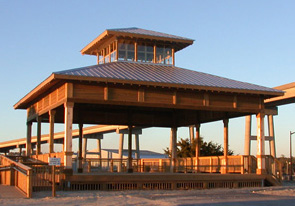
ISSUE/ACTION REQUESTED:
Have Right Angle Engineering discuss their report and answer questions from the BOC
Discuss current and potential plans for addressing issues associated with the pavilion
Take action, if necessary, to proceed with plans for addressing the situation
BACKGROUND/PURPOSE OF REQUEST:
Right Angle Engineering’s evaluation of the pavilion’s structural condition states: “We would recommend that consideration be given to replacement of the existing pavilion. For the purpose of this letter report, we expect the short term to mean that either repair or replacement plans be complete within 12 months with repair, replacement or demolition occurring within the 12 subsequent months.”
Since the report was dated February 24. 2023, the first 12 months is almost up. The BOC is requesting an update on the status of the situation.
Evaluation of Holden Beach Pavilion Structural Condition
As requested, representatives of Right Angle Engineering visited the referenced site in January of 2023 to investigate the existing framing condition as compared to the designed repairs by Criser Troutman Tanner 2010. We were provided drawing SO.I and Sl.O “Temporary Bracing System” dated 4/20/10 and Sl.O “Column Repair Plan” dated 8/11/10. The main purpose of this report is to determine if the designed repairs are functioning as intended since installation in 2010.
SUMMARY
Based on our investigation, we have determined that failure of the existing structure is not immediately impending, but significant repairs and/or improvements are required in the short term. We anticipate that the scope of repairs/improvements could exceed the value of the existing structure and considerations should be given to full replacement of the pavilion.
PROJECT DESCRIPTION
Building of the original pavilion structure began in 2009 with a contract for construction based on meeting current building codes and no known design drawings are on record or saved by the Town. After the initial construction of the structure was complete, the Town hired a different Contractor to add galvanized strapping, plates, and ties on the existing wood frame to completely tie the roof to the existing pile foundation. In 2010, Criser Troutman Tanner engineers developed temporary bracing system designs to provide proper strength against lateral stresses. Later in 2010, Criser Troutman Tanner developed a column repair plan to provide the required foundation for the structure. Both designs were based on design loads of roof system at 20 PSF, floors/balconies at 100 PSF, and wind velocity of l30 mph.
CLOSING
Based on our investigation and evaluation, the pavilion was not repaired/improved in accordance with engineered plans completed in 20I 0. When coupling the pile repair work with roof truss repairs, framing repairs, soon to be needed decking restoration, likely roofing replacement, and other aesthetic improvements, these costs likely approach or exceed the current value and/or replacement costs of the 14 year old structure. We would recommend that consideration be given to replacement of the existing pavilion. For the purpose of this letter report, we expect the short term to mean that either repair or replacement plans be complete within 12 months with repair, replacement or demolition occurring within the 12 subsequent months.
Update –
Timbo stated that the pavilion was not built to the original design parameters. Timbo said that some repairs have been made, but that they are just a temporary fix. A year ago, Right Angle Engineering did an evaluation which concluded that the scope of repairs/improvements could exceed the value of the existing structure and considerations should be given to full replacement of the pavilion. The structure continues to deteriorate so we are reaching a point where the staff will have to take some action and probably will have to condemn it due to safety concerns. The motion was made to have Right Angle Engineering firm come back and reassess the structure, do another evaluation and issue a new report, with us shutting down use of the facility until we get the report. If they determine that the building is unsafe then they would have to cancel the summer concerts normally held there. Timbo’s recommendation is to remove the top of the structure which would address his safety concerns. Commissioner Smith took position that it’s not necessary to spend the money for a new report since we already know what is wrong with the structure. Timbo stated that an engineering firm is going to have to look at it at some point so we might as well do it on the front end of the project. The bottom-line is the pavilion needs to be shut down until properly repaired or reconstructed.
A decision was made – Approved (3-2)
Commissioners Smith and Dyer opposed the motion
10. Discussion and Possible Action on Block Q – Mayor Pro Tem Myers and Commissioner Thomas
Agenda Packet – page 48
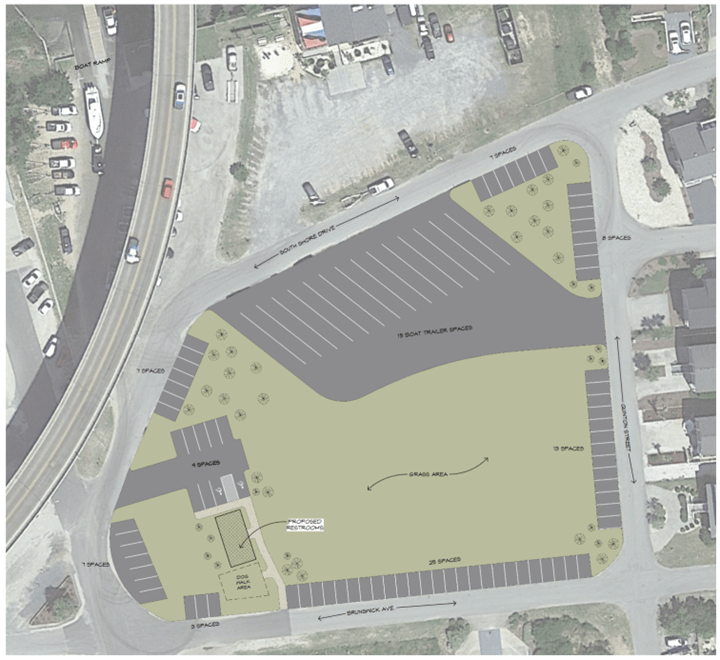
ISSUE/ACTION REQUESTED:
Task the Parks and Recreation Board to work with the current architect to develop a new site plan for Block Q that includes a concert space with dance floor, the planned ADA compliant bathrooms, green space, and other potential amenities (e.g., playground equipment, shaded areas, benches, picnic tables, informational panels, areas for food trucks, usage during festivals).
BACKGROUND/PURPOSE OF REQUEST:
The plans for Block Q are being re-visited, and since the pavilion may need to be demolished, the concerts could be moved to Block Q and the property could become more of a “Town Center.” The Parks and Recreation Board is the appropriate board to address this issue and develop recommendations for moving ahead.
Update –
This project was also put on hold and is in a timeout too. The motion made was to task the Parks and Recreation Board to work with the current architect to develop a new site plan for Block Q. Commissioner Smith feels it is a waste of time and money, since we already have a plan.
A decision was made – Approved (3-2)
Commissioners Smith and Dyer opposed the motion

Wait, What? The list of potential amenities is ridiculous. We should not have this project attempt to be a panacea, where we cram everybody’s wish list into this project. We already have most of these amenities at our Bridgeview Park, so we do not need them at Block Q too. It seems to me that we should just start with only the most essential elements like the restrooms, vehicle and boat parking. Keep It Simple Stupid (KISS)!
11. Audit Committee Items – Town Clerk Finnell
. a. Discussion and Appointment of Commissioner to Serve on the Audit Committee
. b. Discussion and Possible Selection of Members to Fill Vacancies on the Audit Committee
Agenda Packet – pages 55 – 60
ISSUE/ACTION REQUESTED:
Appoint a commissioner to Audit Committee. Fill two vacancies on the Audit Committee.
BACKGROUND/PURPOSE OF REQUEST:
Per §30.27, a commissioner shall be appointed to the Audit Committee in January of each year.
The committee shall be comprised of a member from the Board and not less than two or more than four property owners as full members, plus one alternate.
Per Section 30.26 of the Code of Ordinances, the Audit Committee is comprised of a member of the Board of Commissioners and not less than two or more than four residents or property owners of the Town of Holden Beach as full members, plus one alternate member (Attachment 1).
The commissioner shall be appointed to the Audit Committee by the Board in January of each year. We have two full member vacancies (Attachment 2).
Debra Kosch, Mary Vail Ware, Grace Lam, Tim Throndson, Keith Smith and Kent Steeves have submitted their names to be considered for the vacancies. Interviews are scheduled for January 23rd at 4:45 p.m.
The Board can vote by ballot or verbally to fill the positions. If ballots are used, please make sure to sign your name on the ballot.
Update –
Commissioner Thomas nominated Mayor Pro Tem Myers to serve as Audit Committee Chairman. The Board selected Mary Vail Ware and Tim Throndson to fill the vacancies on the committee.
A decision was made – Approved unanimously
12. Discussion and Possible Approval of Resolution 24-01, Resolution Approving Truist Signature Card – Town Manager Hewett
Agenda Packet – pages 61 – 63
Resolution 24-01 » click here
ISSUE/ACTION REQUESTED:
Update existing bank signature cards to include assistant town manager and subsequent designation of assistant town manager as deputy finance officer.
BACKGROUND/PURPOSE OF REQUEST:
The Local Government Fiscal Control Act (excerpt attached) requires all checks to be signed by the finance officer or a properly designated deputy finance officer and countersigned by another local government official. Recent events and current manpower configuration have illuminated the need to formally upgrade the Town’s procurement procedures.
Update –
Historically, the official signatories for the Town’s Truist accounts have been the Mayor, the Mayor Pro Tem and two staff members. This Resolution does not include the Mayor Pro Tem and instead adds a third staff member. This is simply a housekeeping item with an update of signatories, it was adopted as submitted.
A decision was made – Approved unanimously
13. Town Manager’s Report
Personnel Achievements & Recognition
Carey Redwine – Building Level I Certification
Daniel McRainey – NC Government Finance Officer Certification
Christy Ferguson -Appointed to the ASBPA Governmental Affairs Committee
* American Shore And Beach Preservation Association (ASBPA) / https://asbpa.org/
Sewer Lift Station #2
Previously reported – December 2023
The Town was informed by Congressman Rouzer’s office that the EPA has awarded the project funding. The NC Department Water Quality appropriation has not been finalized yet.
Update –
The NC Department Water Quality application was made. The two (2) million dollar appropriation has not been finalized yet; it still needs to be approved. We are also still waiting for the $2.7m dollars from the State and Tribal Assistance Grants (STAG) funding
* https://www.epa.gov/system/files/documents/2022-05/fy23-cj-11-stag.pdf
Our intent is to dovetail the funding of $4.7m from the two (2) grants
Coastal Storm Risk Management (CSRM) Study
The Town has made application to NC Department Wildlife Resources for $750k state budget appropriation for the Town’s CSRM Study contribution match. It is anticipated that the $750k appropriation and pending federal Disaster Relief Act funding that probably will negate the need for any further Town expenditures.
Canal Dredging
Previously reported – January 2023
Survey is underway, which is done every other year. David reminded them that we still don’t have an area to put the spoils.
Update –
$343,800 Department Wildlife Resources grant awarded for Harbor Acres dredging. $257,850 state and $85,950 local which is from the Harbor Acres Canal Special Revenue Fund. Waiting for NC Department Water Quality certification for USACE permit approval. Current Request for Proposal (RFP) is out for a 2,700 cyds bucket to barge project in Harbor Acres. Bids are due back by February 6th. Staff is preparing for BOC consideration of grant acceptance and dredger award in Special Meetings that are scheduled in February.
A request for proposal (RFP) is a solicitation, often made through a bidding process, by an agency or company interested in procurement of a commodity, service or valuable asset, to potential suppliers to submit business proposals.
Stormwater Project Partnership Agreement
Original meeting with USACE was postponed and the meeting has been rescheduled for February 13th. The plan is to use elements from the stormwater master plan currently in development to aid in obtaining federal funds.
 Bike Lane Project
Bike Lane Project
The contractor is on site, and they are making necessary storm water fixes. Once they have completed that part of the project they should start prep work on the paving project.
DOT Bike Lane Report Presentation » click here
The plan includes bike lanes of 5’ on each side of Ocean Boulevard. It will be an asymmetrical widening, that is 7’ on the south side and only 3’ on the north side where the sidewalk is.
Highland Paving has been awarded the contract and has already met with the town staff
Surveying has already been completed and work on storm water issues will begin in November
Paving prep work will start once that is completed, probably sometime in December
They anticipate that the actual paving project will be done beginning March
Work will be done starting from the west end of the island working east
They are still committing to completing the project before Memorial Day
THB Newsletter (10/20/23)
Ocean Boulevard Resurfacing and Bike Lane Project
Highland Paving met with the Department of Transportation and staff last week to discuss the upcoming project. They communicated that storm water work will begin in November. The subsequent paving prep work, which we are thinking will take place in December, will involve removal of the road shoulders, three feet on the north side of the road and seven feet on the south side of the road. We do not know where the contractor will be at any given point in time. Property owners are responsible for removing any material (landscape timbers/specialty rock, etc.) from the construction area that they don’t want hauled off by the contractor. Replacement material will be generic ABC stone. Mailboxes will be moved/reset, but if they fall apart, the contractor will install a generic replacement. We are forecasting the paving won’t begin until March/April, with the project being completed by Memorial Day.
THB Newsletter (12/21/23)
Ocean Boulevard Resurfacing and Bike Lane Project
Paving prep work for the project will involve removal of the road shoulders, three feet on the north side of the road and seven feet on the south side of the road. Work is scheduled to start in the beginning of January. Make sure to remove any materials before this time. Property owners are responsible for removing any material (landscape timbers/specialty rock, etc.) from the construction area that they don’t want hauled off by the contractor. Replacement material will be generic ABC stone. Mailboxes will be moved/reset, but if they fall apart, the contractor will install a generic replacement.
THB Newsletter (01/16/24)
DOT Resurfacing and Bike Lane Project
The contractor will start moving mailboxes and street signs this week. Mailboxes will be relocated to the far edge of the right-of-way. Mail service is not expected to be impacted. Subsequent work on clearing material from the right-of-way is scheduled to begin once this work has been completed.
Update –
Contractor is wrapping up some stormwater improvements and mailbox relocations issues this week. Equipment mobilization is scheduled for this week, so he anticipates work to start very soon. It’s a work in progress but he still says the project being completed by Memorial Day.
Wildlife Boat Ramp
Previously reported – December 2023
The town was contacted by NC Wildlife to schedule a meeting this week to discuss plans being considered to renovate the boat ramp
Update –
The Town staff met with NC Department Wildlife Resources representatives last week. They confirmed that renovation of the boat ramp is being initiated. David does not know what is being planned or when work will be started. Staff communicated their concerns with the current site and went with the representatives to the County’s property across the ICW as a possible candidate for a larger facility.
Tire Apocalypse
Previously reported – December 2023
The past weekend’s storm has left several hundred tires from a decades old artificial reef experiment strewn the entire length of the beach. From time to time during storm events the reef breaks up further and old tires make their way on to the strand. We are working to get these hazards off the strand; however, it may take a week or more to remove what’s there already with more possibly showing up over the course of the next several days. Please remain vigilant as there will be extra equipment on the strand as the tires are collected and removed.
Approximately one thousand (1,000) tires washed up from the weekend storm event. The Division of Marine Fisheries already removed all of the tires from the beach strand. If additional tires wash up, please call Town Hall to have them removed.
Update –
A second deposit of approximately another one thousand (1,000) tires washed up from the recent storm event. The Division of Marine Fisheries responded rapidly and already removed all of the tires from the beach strand again. If additional tires wash up, please call Town Hall to have them removed. David said that he has concerns about the artificial reef shedding the tires there and the impact on our sand resources.
In Case You Missed It –
THB Newsletter (01/05/24)
Public Input Session – Sailfish Park
McGill Associates, P.A. will hold a public input session next Friday evening, January 12th from 4:00 -7:00 p.m. regarding Sailfish Park. The consultants will unveil two draft schematics at the meeting and the public can provide comments to guide the future planning for the park. The meeting will be held in the Town Hall Public Assembly.
Notice is hereby given that a quorum of the Holden Beach Board of Commissioners may be present at the Public Input Session for Sailfish Park on January 12, 2024.
Residents get final peek at Sailfish Park conceptual plans
On Friday, Jan. 12, Holden Beach residents had the last opportunity to give direct input on the proposed conceptual plans for Sailfish Park, located on Sailfish Drive. Representatives from McGill and Associates, who are the project consultants, were in attendance to display their ideas and answer the public’s questions. No presentation was given on the park and its potential enhancements. Over 20 residents showed up. The park is located at the very end of Sailfish Drive, a residential road, at a dead end. Residents have spoken about the park at several Holden Beach Board of Commissioners meetings and say its natural area is loved by many residents and visitors year round. McGill and Associates Shallotte Office Manager Michael Norton told The Brunswick Beacon that this was the third public input session. This allowed residents to view proposed alternatives based on the prior sessions and tell the consultants exactly what they want, and think will work from the drafted plans. He said the intent was to demonstrate different layouts that incorporate parking, access, facility uses and amenities. Overall, he said, the park size itself will create limiting factors that retain the character of use. He added that the plans have evolved over several months and that the current conceptual layouts have alternative amenities, like bathrooms, that could be added or removed depending on what residents want. There were two conceptual plans on display, identified as plans A and B. Each plan entails similar ideas with permeable paved surface paths, some new seating options, a new plaza with shade sails, a new gravel parking lot, paved handicapped parking spaces, proposed public restroom opportunities and Americans with Disabilities Act (ADA) accessibility components, such as level surfaces. “It doesn’t necessarily mean that a restroom will end up on the property,” Norton said, noting that the restrooms and other site features could be a current proposed amenity or become a future consideration. He said one concept would provide access for all to a waterfront deck area while the other concept continues the accessible trail along the waterway bulkhead. The biggest difference between the plans is that conceptual Plan A includes a wooden boardwalk with a handrail that would allow folks to walk alongside the water on a flat, ground-level surface. Conceptual Plan B does not include the boardwalk but does have a new canoe and kayak launch and a proposed auditory play area for children with disabilities. Norton said both versions of the park would offer folks with limited physical mobility better access to the waterfront view and activity opportunities, like fishing, that park-goers enjoy. He said the public input session was intended to let folks view specific items and layouts based on prior input sessions and offer additional input on the visualized concepts, noting that compiled final public commentary will help shape the final plan. During the April 18, 2023, Holden Beach Board of Commissioners meeting, commissioners spoke about the need for public bathrooms on the island, while Sailfish Drive residents spoke against enhancing the park with a restroom facility. The town’s 2021 Comprehensive Parks and Recreational Master Plan states that public restrooms and restroom buildings are a desire of visitors who participated in the plan input sessions. The plan included recreation needs assessments, community input, goals, plans and recommendations for the future. The plan recommended installation of public restrooms at Sailfish Park. Some residents who spoke during the public comment portion of the April meeting admitted that public restrooms are needed throughout the island but said they don’t want them at the park. April public commenters maintained that having a bathroom facility at the park would disrupt the peace of the park and the safety of the street’s residents. Some said that the park already has unwanted visitors at night that participate in illegal substance use and other dangerous activities. Sailfish Drive resident Carol Moneypenny, who spoke in April, told The Beacon at the input session that the road has no sidewalks and that people mainly walk along the road. She said adding any recreational enhancements, like a restroom, could create a large safety issue for pedestrians. She said she grew up playing at the park and that it’s a state jewel for wildlife, native plants and coastal beauty. “It’s always been a beautiful, natural spot on the beach,” she said. Moneypenny and her husband, Steve, said they have fought several times to keep the park the way it has been since they moved there in 1994. They said they have created several petitions against changing the park over the years and said they consistently get a lot of support. “We’re rallying to keep it natural,” Carol Moneypenny said. Steve Moneypenny said there is already a parking issue at the park with people parking in residents’ yards, blocking driveways and sometimes parking in the driveways, and noted that adding anything to the park would cause more people, thus, more problems. He said he wants wildlife protected and doesn’t want anything done to cause high attraction to the park but is in support of fixing the parking, retaining wall and bulkhead. “Once you lose it, it’s gone,” he said about the Sailfish Park wildlife and nature. “It’s worth protecting.” Tarpon Drive resident Melanie Champion spoke in favor of enhancing the bulkhead at the park and making the area more accessible for folks with difficulty walking. Though in favor of some of the enhancements, Champion said she does not want large structures or facilities that could encourage criminal behavior, noting she doesn’t want the Holden Beach Police Department to take on more responsibility than they already carry. “Simple is best,” she noted. Holden Beach Commissioners Tracey Thomas and Rick Paarfus and Mayor Pro-Tem Tom Myers attended the public input session, after the town posted a quorum notice, and told The Brunswick Beacon they were happy to see the good turnout. Thomas said she is interested to see what the residents had to say.
Read more » click here
THB Newsletter (01/12/24)
Pickleball Classes
Pickleball classes will be held every Monday starting at 10:00 a.m. for beginners, 11:00 a.m. for intermediate and every Tuesday starting at 4:30 p.m. for ages 12-17, 5:30 p.m. for beginners, 6:30 p.m. for intermediate, and 7:30 p.m. for advanced, from March 18th through May 7th at Bridgeview Park. Cost is $100 for the season for residents and $110 for non-residents (or $180 for two classes per week for the season for both residents and nonresidents). For more information click here.
Notice is hereby given that a quorum of the Holden Beach Board of Commissioners will be present at the Essentials of Municipal Government training course January 18 and 19, 2024.
THB Newsletter (01/18/24)
Shag Lessons
The Town of Holden Beach will offer shag lessons at the Holden Beach Chapel on Thursday evenings beginning February 29th and going through April 4th. Cost is $60 for residents for the series and $70 for non-residents. Beginners’ classes will run from 5:30 – 6:15 p.m. and intermediate from 6:15 – 7:00 p.m. You must have a dance partner in order to sign up. The instructor for the class will be Chuck Boney. Register by emailing Christy at [email protected] with your name, phone number and whether you are interested in the beginner or intermediate class.
Inspections Permit Specialist
Inspections will be looking to fill its front desk position ASAP with the vacancy created by the recent release of the individual filling that slot.
Water/Sewer Account
Please note that you have a NEW ACCOUNT NUMBER for your water/sewer account. It is very important that you include the correct account number on your memo line when remitting payment, you will not be sending a paper stub in when making your payment moving forward. Click here if you would like to be set up on bank draft.
National Flood Insurance Program: Reauthorization
Congress must periodically renew the NFIP’s statutory authority to operate. On November 17, 2023, the President signed legislation passed by Congress that extends the National Flood Insurance Program’s (NFIP’s) authorization to February 2, 2024.
News from Town of Holden Beach
The town sends out emails of events, news, agendas, notifications and emergency information. If you would like to be added to their mailing list, please go to their web site to complete your subscription to the Holden Beach E-Newsletter.
For more information » click here

Town of Holden Beach officially established on February 14, 1969
Celebrating our 55th Anniversary!
14. Mayor’s Comments
From the Mayor’s Desk (01/20/24)
NC Rate Bureau Requests Increase in Homeowners’ Insurance Rates
Please see the following press release from the NC Department of Insurance and respond accordingly to help keep the cost of ownership at Holden Beach down. The press release details four ways to provide feedback during the public comment process.
Insurance Commissioner Mike Causey announced that the North Carolina Rate Bureau filed a rate filing with the North Carolina Department of Insurance on Wednesday asking for an average statewide increase in homeowners’ insurance rates of 42.2%.
The Rate Bureau has asked for the rates to become effective Aug. 1.
The North Carolina Rate Bureau represents companies that write insurance policies in the state and is a separate entity from the North Carolina Department of Insurance.
This rate filing follows the homeowners’ insurance rate filing that the Department of Insurance received from the North Carolina Rate Bureau in November 2020, where the Rate Bureau requested an overall average increase of 24.5%. That filing resulted in a settlement between Commissioner Causey and the Rate Bureau for an overall average rate increase of 7.9%.
A public comment period is required by law to give the public time to address the proposed rate increase. There are four ways to provide comments:
- A public comment forum will be held to listen to public input on the North Carolina Rate Bureau’s rate increase request at the North Carolina Department of Insurance’s Jim Long Hearing Room on Jan. 22 from 10 a.m. to 4:30 p.m. The Jim Long Hearing Room is in the Albemarle Building, 325 N. Salisbury St., Raleigh, N.C. 27603.
- A virtual public comment forum will be held simultaneously with the in-person forum on Jan. 22 from 10 a.m. to 4:30 p.m.
The link to this virtual forum will be:
https://ncgov.webex.com/ncgov/j.php?MTID=mb3fe10c8f69bbedd2aaece485915db7e - Emailed public comments should be sent by Feb. 2 to: [email protected].
- Written public comments must be received by Kimberly W. Pearce, Paralegal III, by Feb. 2 and addressed to 1201 Mail Service Center, Raleigh, N.C. 27699-1201.
All public comments will be shared with the North Carolina Rate Bureau. If Department of Insurance officials do not agree with the requested rates, the rates will either be denied or negotiated with the North Carolina Rate Bureau. If a settlement cannot be reached within 50 days, the Commissioner will call for a hearing.
To see a specific table of proposed homeowners’ rate increases across the state, please click here.

The Causeway plan is available for your review.
It is important for our community to stay engaged in the process.
Previously reported – August 2022
Alan said that he is getting a lot of complaints about the causeway. He reminded everyone that the causeway is not part of the Town of Holden Beach, but it is a part of Brunswick County. There is an ongoing effort to make improvements and they are discussing a number of opportunities to beautify the causeway.
HB Causeway Study Report » click here
THB Newsletter (01/25/24)
Holden Beach Causeway Study
The Grand Strand Area Transportation Study MPO (GSATS) funded a study to improve the Holden Beach Causeway by observing the area and addressing the concerns of Causeway business owners and patrons as well as the community related to vehicular and pedestrian safety, accessibility, right‐of‐way encroachments, and parking deficiencies. This study provides insight as to how the corridor functions and ideas for future improvements from a transportation and land use perspective.
For more information and to view the study, visit the Brunswick County Planning Department’s website: https://www.brunswickcountync.gov/409/Holden-Beach-Causeway-Transportation-Cor
The Draft Holden Beach Causeway Transportation Study will go to the Brunswick County Board of Commissioners for a public hearing and for their consideration on February 5, 2024, at 3:00 p.m.
General Comments –
BOC’s Meeting
The Board of Commissioners’ next Regular Meeting is scheduled on the third fourth Tuesday of the month, February 20th

It’s not like they don’t have anything to work on …
The following twenty-seven (27) items are what’s In the Works/Loose Ends queue:
- 796 OBW Project
- Accessory Structure
- Accommodation/Occupancy Tax Compliance
- ADA Mediation Agreement
- Audit Committee Chair
- Beach Mat Plan
- Bike Lanes
- Block Q Project
- Carolina Avenue
- Crosswalks OBW
- Dog Park
- Fire Station Project
- Harbor Acres
- Hatteras Ramp/Coastal Waterfront Access Grant
- ICW/No Wake Zone Enforcement
- Inlet Hazard Areas
- Parking – 800 Block
- Pavilion Replacement
- Pier Properties Project
- Rights-of-Way
- Sailfish Park Site Project
- Sewer System/Lift station #2
- Stormwater Management Project
- USACE/Coastal Storm Risk Management Study
- Water System Assessment/Water Tower
- Waste Ordinance Enforcement Policy
- Wetland Delineation/Bulkheading
The definition of loose ends is a fragment of unfinished business or a detail that is not yet settled or explained, which is the current status of these items. All of these items were started and then put on hold, and they were never put back in the queue. This Board needs to continue working on them and move these items to closure.


Hurricane Season
For more information » click here.
Be prepared – have a plan!
Board of Commissioners’ – Scorecard
NYC Mayor Koch used to ask – How am I doing?
Imagine if the BOC’s asked you – How’d they do?
The goal of government is to make citizens better off.
Action Taken – 2023
January
Ordinance 23-01, The Revenues and Appropriations Ordinance (#9)
. • Budget appropriation of $119,200 (implement pay plan)
Adoption Resolution 23-01, Assessment roll for paving of Seagull Drive
February
Ordinance 23-02, The Revenues and Appropriations Ordinance (#10)
. • Budget appropriation of $172,682 for water system assessment agreement
Ordinance 23-03, amend firearms ordinance
Ordinance 23-04, The Revenues and Appropriations Ordinance (#11)
. • Budget appropriation of $7,988
. • Recognizes money received for the sale of assets
Adoption Resolution 23-03, amend paid parking fee schedule
March
Adoption Resolution 23-02, become a member of American Flood Coalition
Adoption Resolution 23-04, Assessment Roll for Seagull paving
Adoption Resolution 23-05, Public Works fee schedule
Adoption Resolution 23-06, Building fee schedule
Ordinance 23-05, The Revenues and Appropriations Ordinance (#12)
. • Budget appropriation for 796 OBW of $48,440
Ordinance 23-06, The Revenues and Appropriations Ordinance (#13)
. • Parking revenue budget appropriation of $50,908
Ordinance 23-07, Chapter 93: Junked Vehicles and Equipment
. • Restrictions Enumerated
April
Adoption Resolution 23-07, Building fee schedule amend effective date
Adoption Resolution 23-08, participate in NC CLASS
Ordinance 23-08, The Revenues and Appropriations Ordinance (#14)
. • Grant for beach access at the pier, town match of $16,746
Adoption Resolution 23-09, Lockwood Folly Inlet Maintenance Project Grant
Adoption Resolution 23-10, ADA Mediation Agreement
May
Ordinance 23-09, The Revenues and Appropriations Ordinance (#15)
. • American Rescue Plan money
. • Budget appropriation of $211,616 (transfer funds between accounts)
Ordinance 23-10, The Revenues and Appropriations Ordinance (#16)
. • Lockwood Folly Inlet Dredging
. • Budget appropriation of $106,250
June
Ordinance 23-11, The Revenues and Appropriations Ordinance / Budget Ordinance
. • Approved the town’s $98.4 million-dollar Budget Ordinance
July
Ordinance 23-12, Chapter 157: Zoning Code
. • Lot Coverage
August
Adoption Resolution 23-11, Installment Financing Contract
. • Lift Station #2 / $5,000,000
September
NA
October
Ordinance 23-13, The Revenues and Appropriations Ordinance (#1)
. • ADA / Key Bridge Foundation comply with mediation agreement
. • Budget appropriation of $261,753 (transfer funds between accounts)
November
Ordinance 23-14, The Revenues and Appropriations Ordinance (#2)
Ordinance 23-15, Order to close Carolina Avenue for Block Q project
Adoption Resolution 23-12, Water Resources Development Grant
December
NA

Wishing you a new year filled with health and happiness
Do you enjoy this newsletter?
Then please forward it to a friend!
Lou’s Views . HBPOIN
. • Gather and disseminate information
. • Identify the issues and determine how they affect you
. • Act as a watchdog
. • Grass roots monthly newsletter since 2008







 Bike Lane
Bike Lane
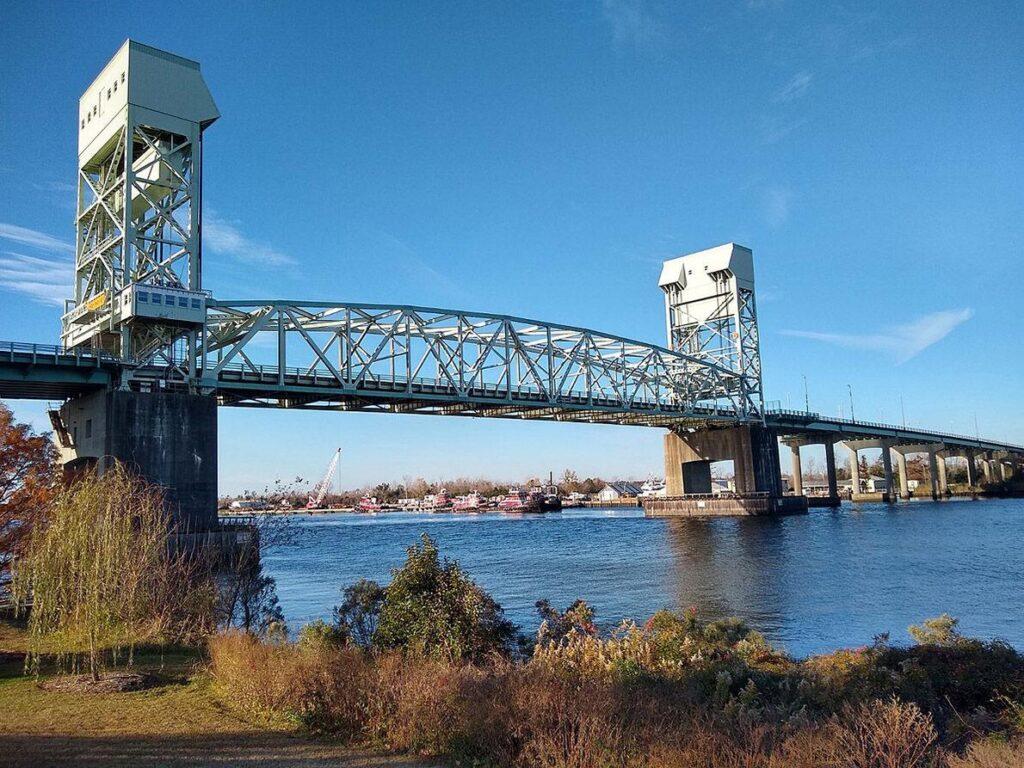

 A New York Professor Wages Epic Battle Against Rats Attacking His Car
A New York Professor Wages Epic Battle Against Rats Attacking His Car


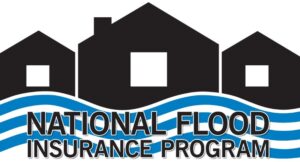
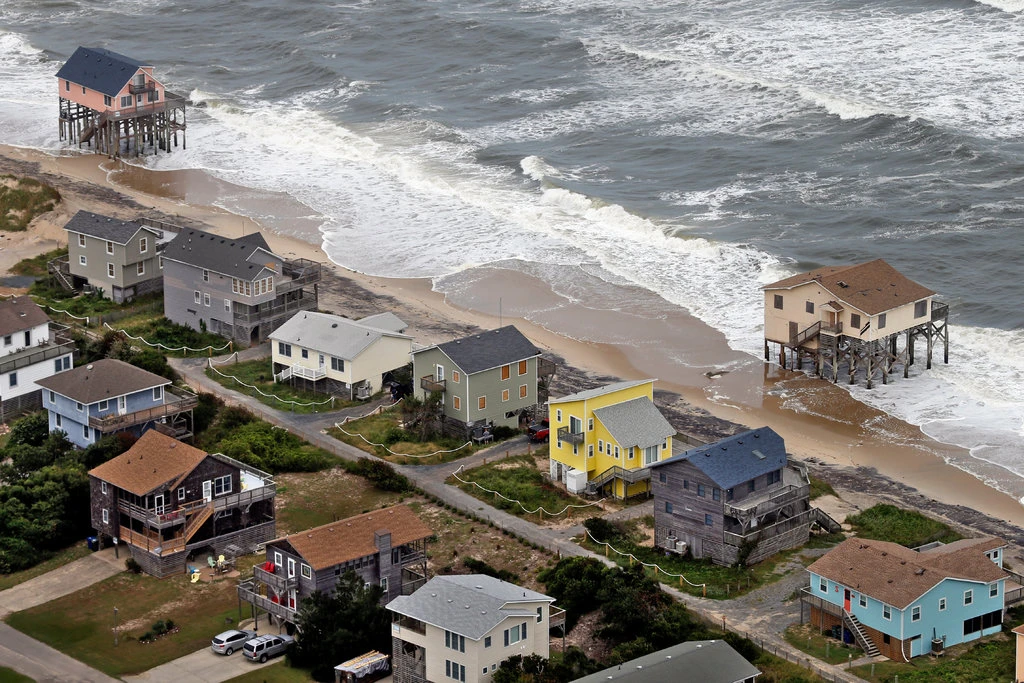 More states deciding home buyers should know about flood risks
More states deciding home buyers should know about flood risks


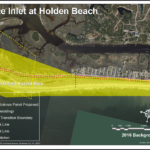






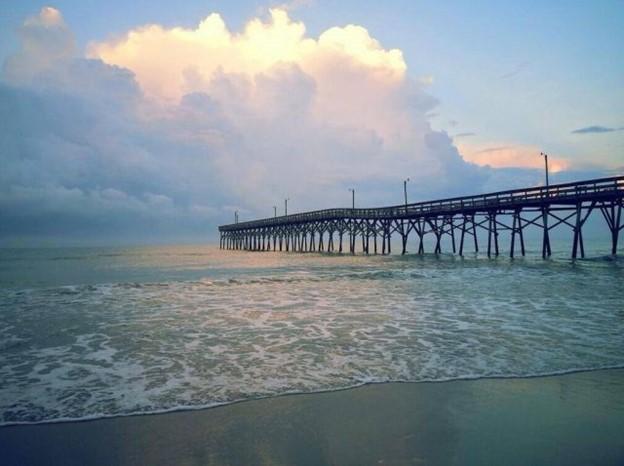



 Tire Apocalypse
Tire Apocalypse





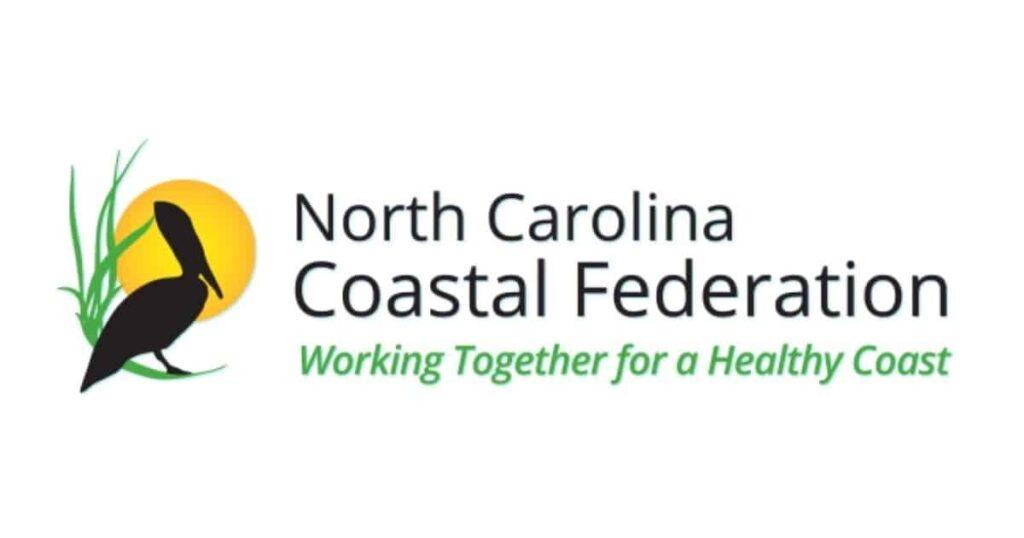

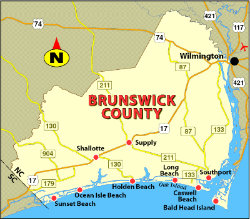 How Brunswick County’s ‘migration story’ has fueled record economic growth
How Brunswick County’s ‘migration story’ has fueled record economic growth
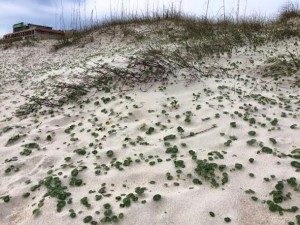
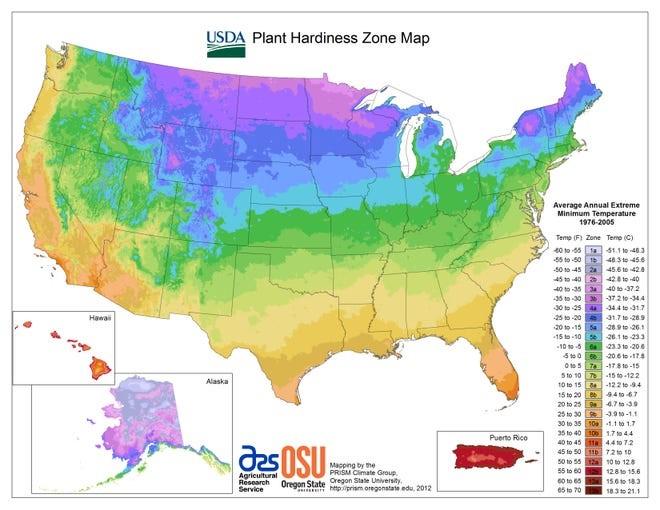
 ZERO DAYS
ZERO DAYS
 Contractors Information Seminar
Contractors Information Seminar




